- Museums & Monuments
- The British Museum (London)

The British Museum (London, England)
Off to the British Museum? See our insider advice for a queue-free visit as well as opening times and phone numbers!
Estimated Attendance
Saturdays are much busier than Sundays, prefer Sunday for the visit if you’re coming on a weekend.
During weekdays there are less people, though school groups are more common than on weekends.
Peak hours are in the morning, from 10am to 3pm . Come later in the afternoon, during the lunchtime or during Friday night.
Tuesday is the best day to visit, with a smaller number of visitors in general during the week. Monday and Wednesday are also good options to consider, as well as Friday night, when the museum has extended opening hours.
There is no real waiting line issue, the museum is free so you won’t need to queue to buy a ticket, but since it’s very popular there tend to be big crowds inside , especially in front of the main exhibits.
Avoid the UK school holiday periods, the British Museum is way more crowded at this time.
You can spread your visit over a series of mornings, or leave the Museum when crowds start to arrive and come back later in the day.
The entrance is free but donations can be given.
There are always less people inside on a sunny day compared to when it’s raining.
Some exhibitions at the British Museum tend to attract tons of visitors, check the current and upcoming ones in order to avoid visiting the museum on their opening and closing weeks .
The museum is closed on Good Friday.

Photo credits to Nic McPhee via Flickr
Plan your visit
There’s a number of very popular objects in the museum that attract crowds at all times:
- The Rosetta Stone (room 4)
- The Parthenon Sculptures (room 18)
- The Ancient Egypt collection, with its mummies (rooms 62-63)
- The “Living and Dying” gallery with an Easter Island statue (room 24)
- The Portland Vase (room 70)
- The Lewis Chessmen (room 40)
At the same time some galleries tend to be almost empty even during peak hours, like the Japanese or the Prints and Drawings Galleries.
Keep this in mind to prepare your visit: if you arrive at the opening time - see the big sights first, then explore the galleries that interest you more than others and head to the lesser-known ones when the British Museum becomes overcrowded. If you arrive in the afternoon - leave the big sights for the end of your visit when there will be less people.
Guided Tours
Guided tours take place during different time slots, you can join the Highlights tour (on Friday and weekends) information is given on the most exciting parts of the museum in 90 minutes (book it here or free daily eye-opener tours that take place in different rooms during the day (check the timetable here ).
Private guided tours can be booked here (around 2h, 23€).

Photo credits to insunlight via Flickr
Tips for a few days in London
This page will give you many tips to avoid crowds in London as well as crowd schedules for top tourist attractions in order to plan your visits.
Useful links
Telephone numbers.
Tottenham Court Road (500m)
Holborn (500m)
Russell Square (800m)
Goodge Street (800m)
lines 1, 7, 8, 19, 25, 38, 55, 98, 242 (New Oxford Street stop)
lines 10, 14, 24, 29, 73, 134, 390 (Stop northbound on Tottenham Court Road, southbound on Gower Street)
lines 59, 68, X68, 91, 168, 188 (Stop on Southampton Row)
The nearest car park to the Museum is located at Bloomsbury Square, WC1A 2RJ.

Photo credits to Wikipedia Commons
Report an error
Have a question, problem, or tip? Share with our other visitors:
- Contact (Hurikat)
Our schedules are just to show you the trend and do not necessarily reflect a specific number of people and/or acurate waiting time. 2013-2024 Hurikat - All rights reserved. All trademarks mentioned herein belong to their respective owners. Terms & Conditions
By using Hurikat, you agree to our use of cookies.

Ultimate Guide to the British Museum for Visitors (2024)
This post contains affiliate links for which I may make a small commission to help keep the site running. You will not be charged extra for these items had you not clicked the links. Thank you for your help to keep the site running!
When people ask me, “Hey, Kalyn, if I had to see one museum in London, which one should it be?” I never hesitate with my answer – the British Museum.
In this guide to the British Museum and British Museum review, you’ll learn why this is my #1 recommended museum in London (unless you have small kids – I’ll explain that later) and how to make the most of your visit to the British Museum.
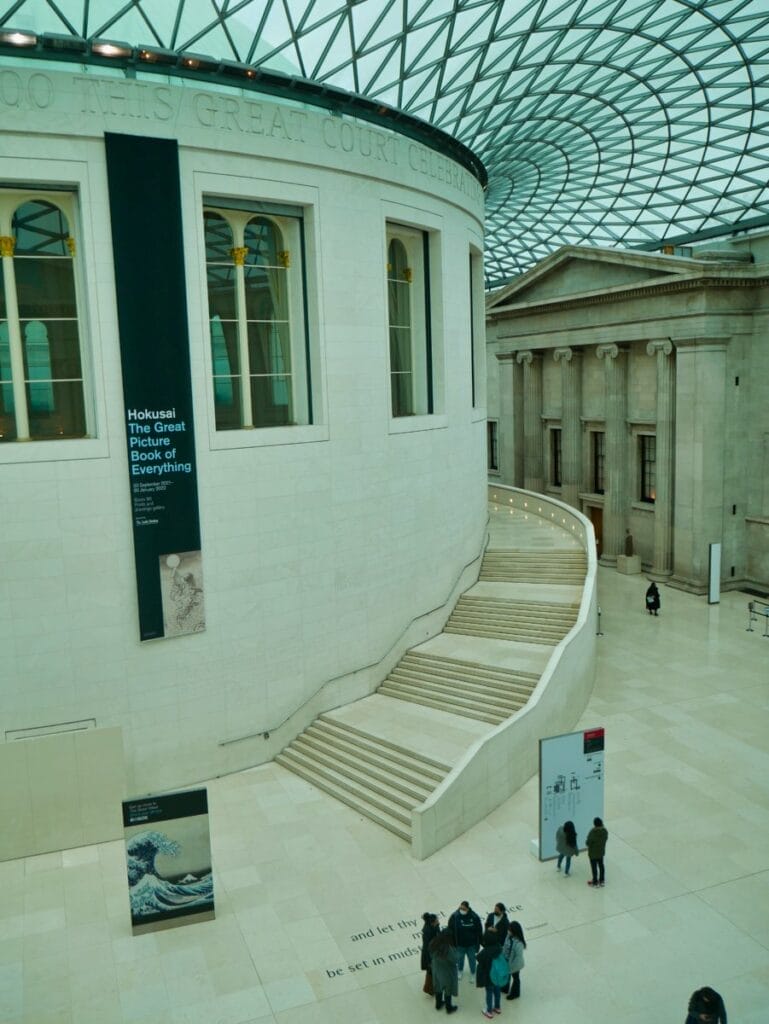
Nestled in the adorable streets surrounding Russell Square tube station and conveniently located near many of London’s higher education buildings, the British Museum is iconic both in its famous pieces and in the stunning architecture inside.
Hey! Want more honest UK tips and planning advice? Click here to join my London and UK Travel Tips Facebook group , where I can answer more of your questions!
The Absolute Must-Knows (from a Londoner)
- 😍 Cheapest Way to See it All: Get the London Pass here (yes, it’s worth it)
- 🎭 Cheapest site for West End theatre tickets: London Theatre Direct
- 🚕 Cheapest and most reliable airport transfer service: Welcome Pickups
- 🚉 Cheapest Way to Book Train and Bus Tickets: Omio
- 🔌 Most Reliable Adapter for UK Plugs: This one
Check out the YouTube channel for more London tips
Where is the British Museum?
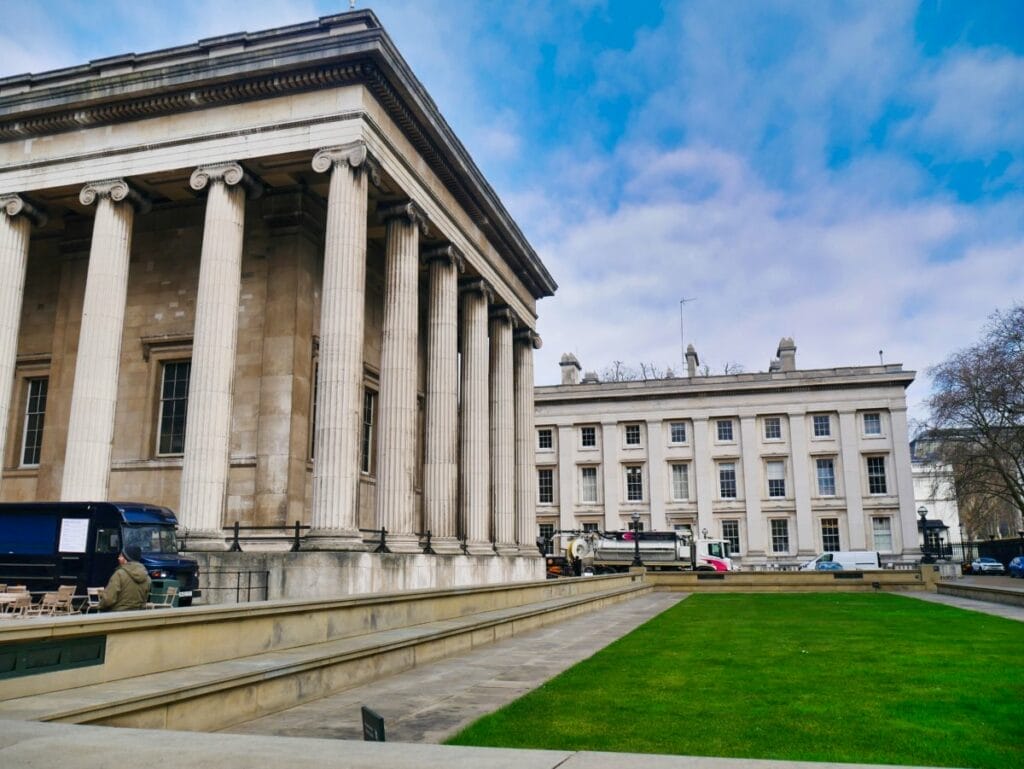
The British Museum is located on Great Russell Street, walking distance from many places in central London but particularly easy from Holborn Station, Goodge Street Station, Tottenham Court Road Station and Russell Square Station.

How to Get to the British Museum
There are a variety of buses that go past the museum, but the most convenient way is to get here by tube .
Simply take the tube to any of the 4 major tube stations surrounding the museum (Holborn, Russell Square, Goodge Street, Tottenham Court Road) and then walk to the museum.
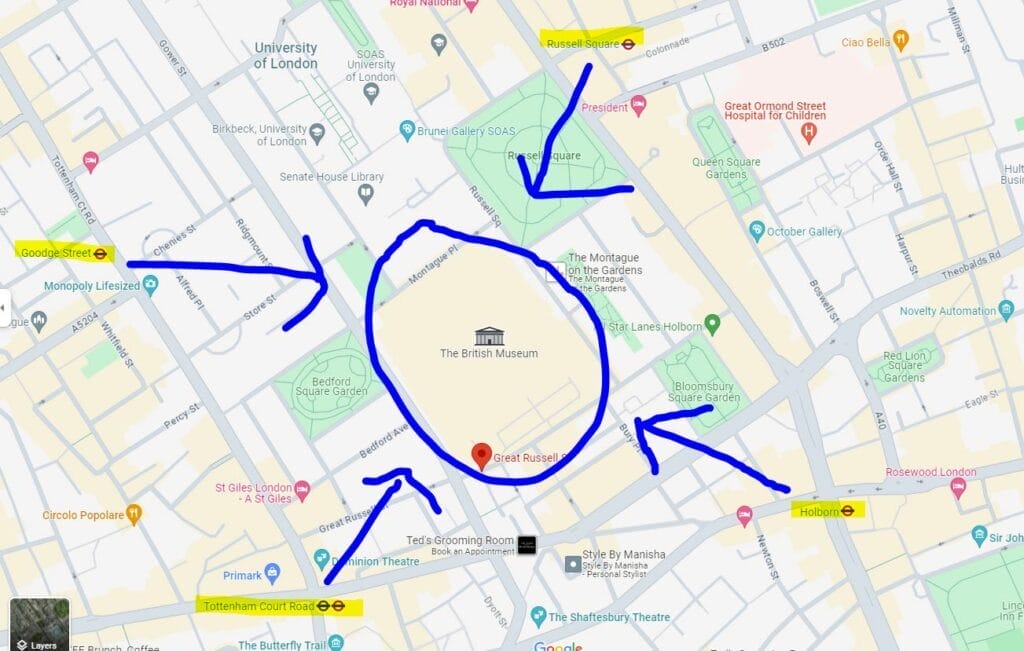
This is a very centrally located museum – leave the car or rental car at home.
Opening Hours
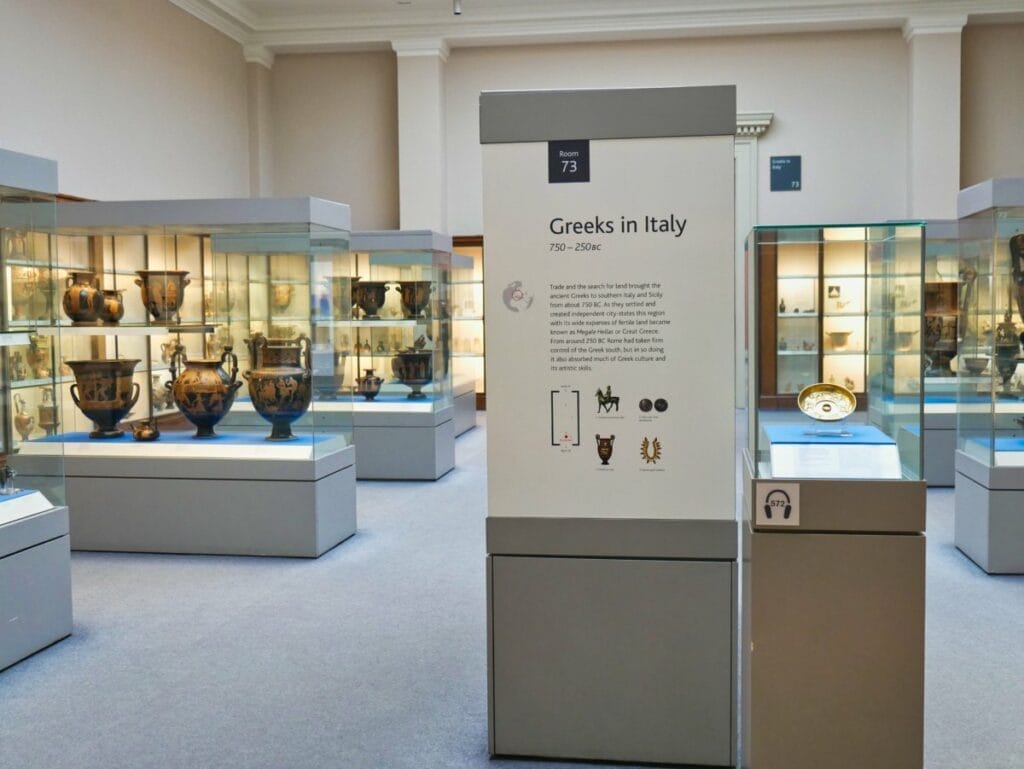
The museum is opened from 10am to 5pm every single day, except December 24th, December 25th, or December 26th.
They also have late opening hours on a Friday until 8:30pm.
Is the British Museum Free?
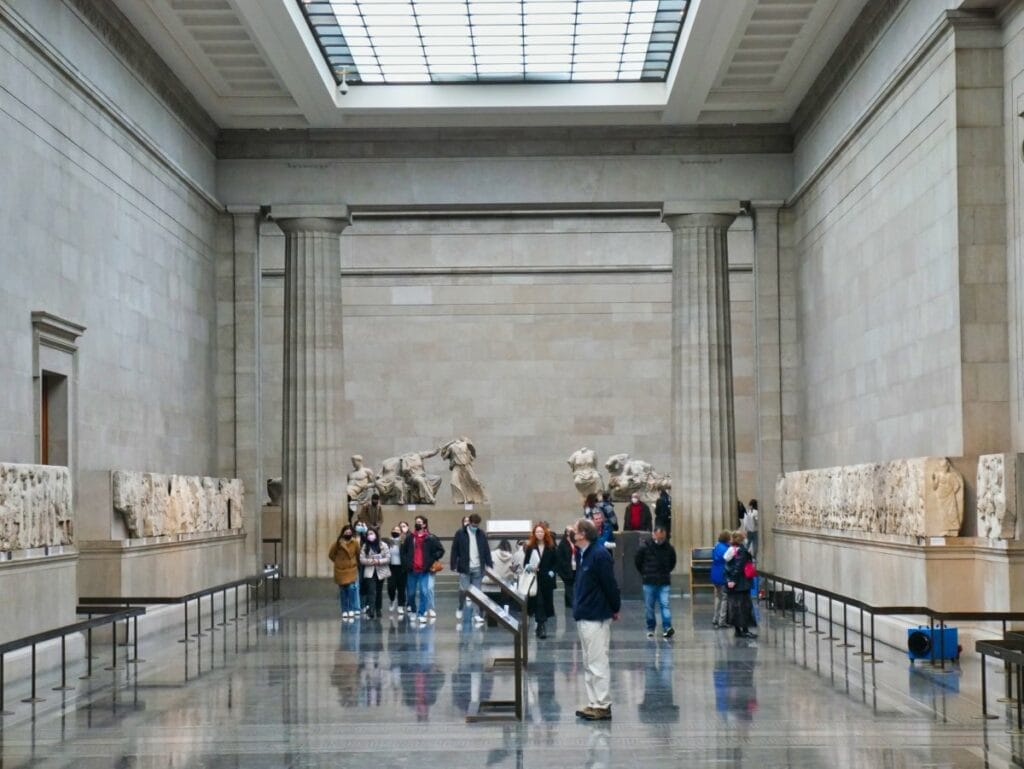
While the British Museum does accept donations when you walk in (not handed to a person, but in a large donation case), it is officially completely free to the public so this is a great thing to do in London on a budget.

What’s at the British Museum?
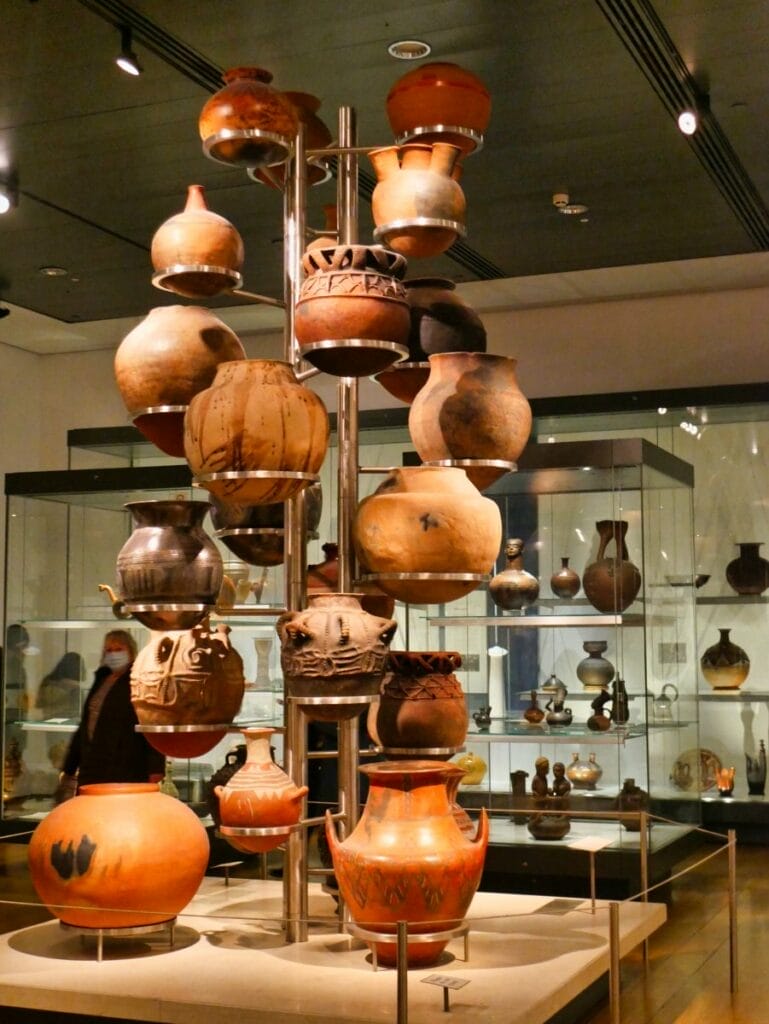
In general, with a vague name like “The British Museum,” it’s important to know what’s actually here.
The official line is that the museum is all about “cultures around the globe from the dawn of human history to the present.”
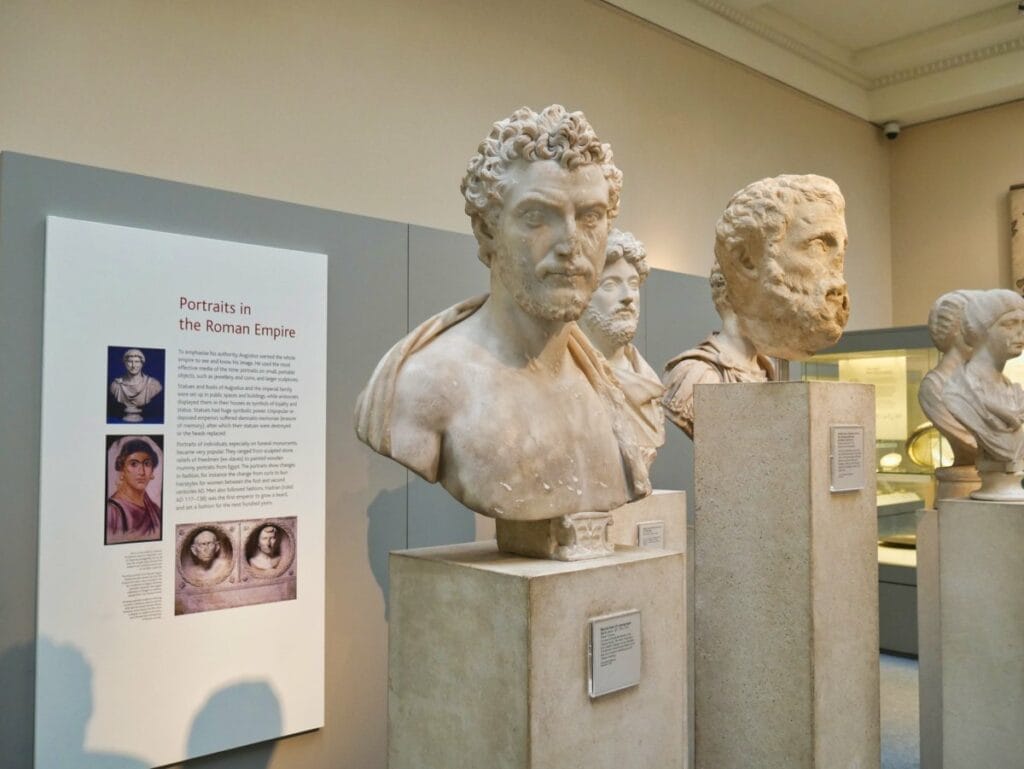
So, funnily enough, despite the British in the name, it is a collection of incredible artifacts that (controversially or not) currently belong to Britain, NOT a museum about the history of Britain itself (though of course that is a part of it).
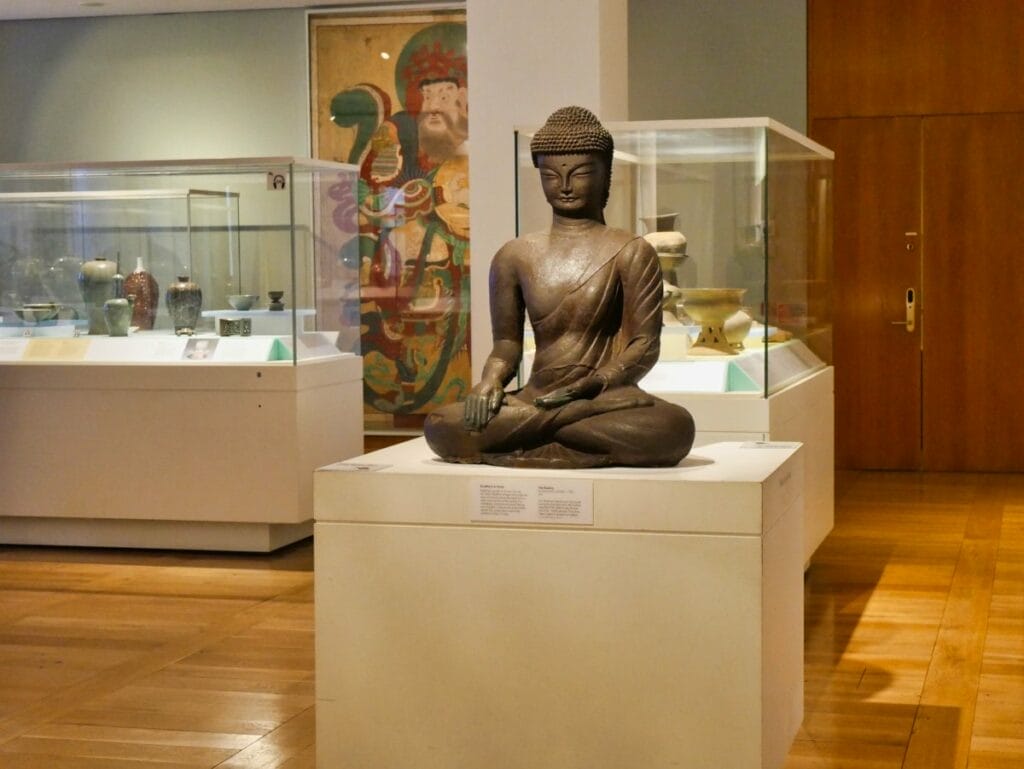
So we’re talking everything from Egyptian mummies to Greek acropolis ruins to paintings to pottery to ancient currency and more.
Also, the interior of this museum has to be seen to be believed.
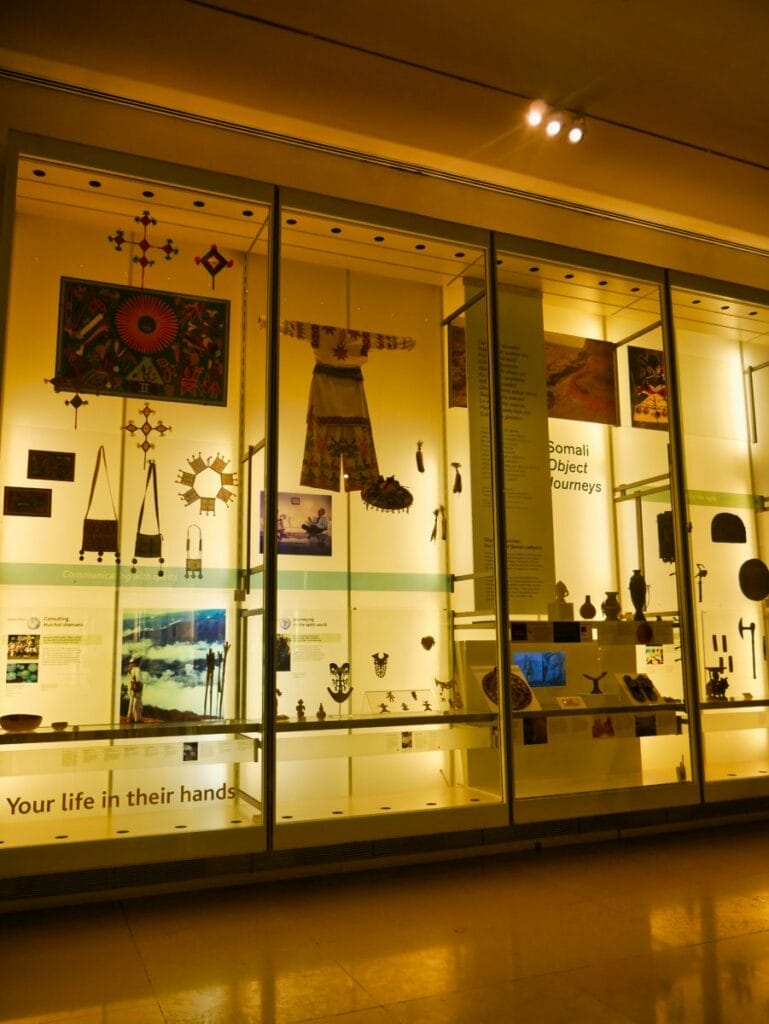
Sometimes I just go into the museum to do some work at one of the long tables here or to bring a book – that’s how relaxing I find it!
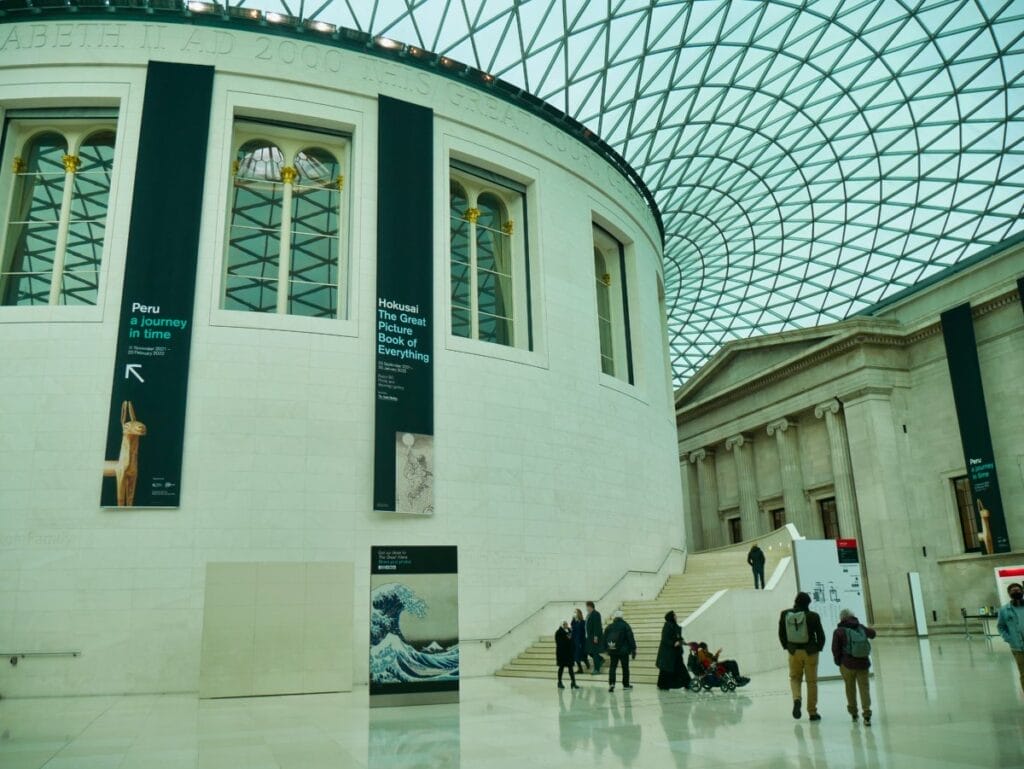
What to See at the British Museum: Highlights of the British Museum
Want some tips for visiting the British Museum?
There are more than 60 galleries at the British Museum, featuring everything from scrolls to Roman ruins to African pottery to Mexican sculptures, but for your average London visitor, there are two main famous pieces at the British Museum that you cannot miss.
The first is Cleopatra – she’s not “the” Cleopatra, but she is a Cleopatra and she is a real, actual, right-there-in-front-of-you Egyptian mummy and while there are other mummies within the British Museum, this one is a big draw for visitors due to the incredible coloring and in tact nature of it.
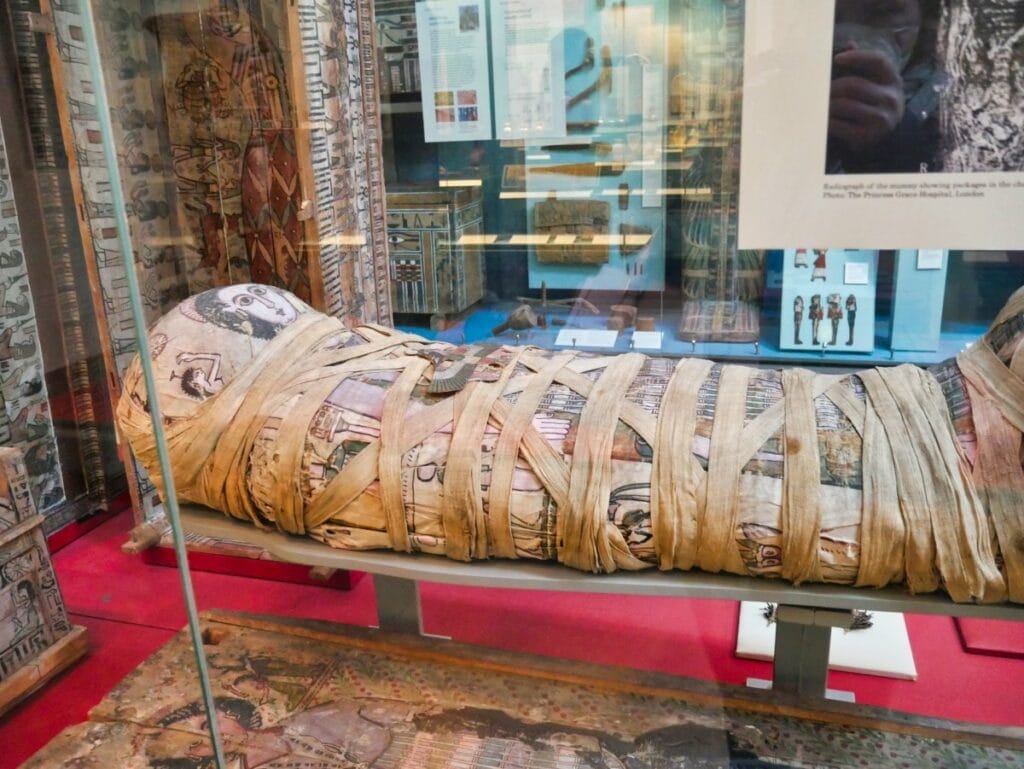
The second is the Rosetta Stone – yes, the real one. It’s been on display in the British Museum since 1802 and is one of the main featured pieces as you first walk in.
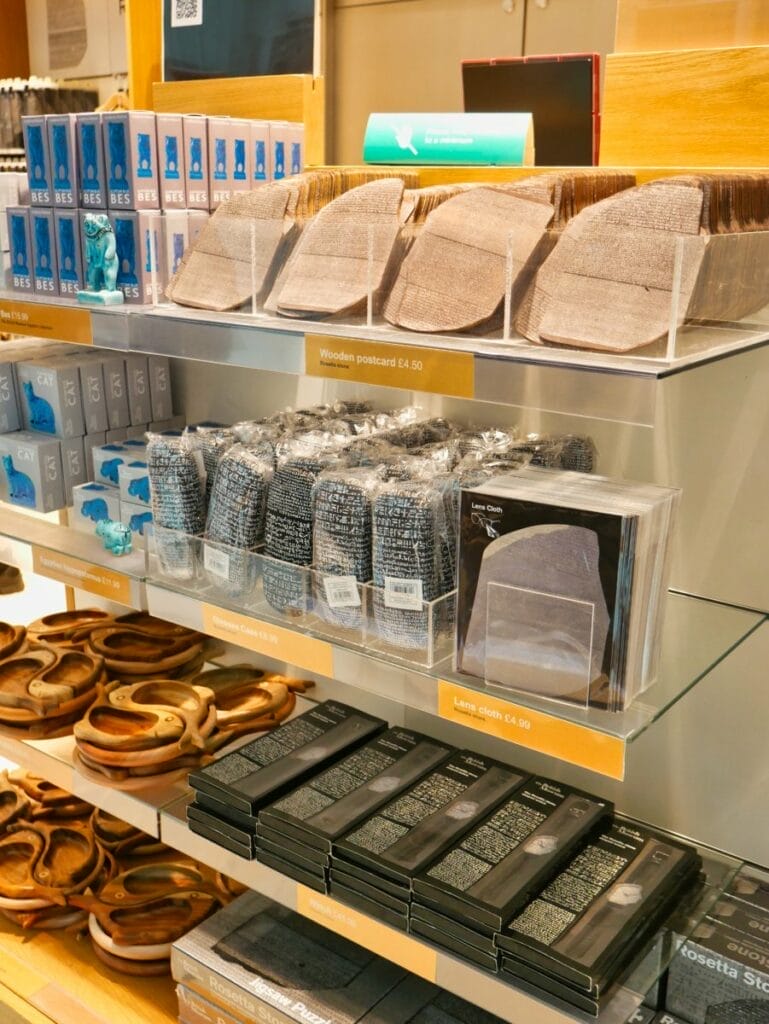
Of course, it’s completely behind glass so there’s no chance of touching or rubbing out any of the history-changing inscriptions in it! But you can get very close and you can take photos without flash.
This piece of slab was instrumental in helping historians to read Egyptian hieroglyphics and you can see it in person at the British Museum!
British Museum with Kids
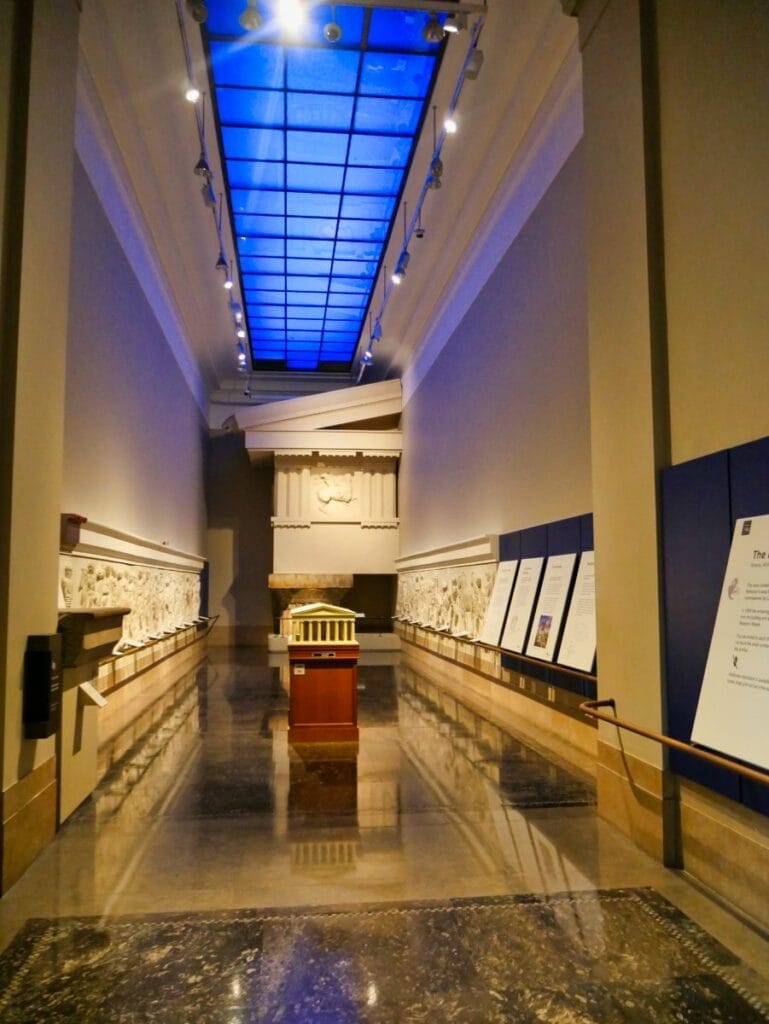
Despite the fact that I think the British Museum is an absolute must-do in London, I would caution that it doesn’t have the same type of interactive exhibits that you might find in places like the Natural History Museum and the Science Museum .
If you have kids that are old enough to appreciate the history and marvel at the mummies and the Greek ruins and all of the cool, larger-than-life stuff, you’ll still have a great time.
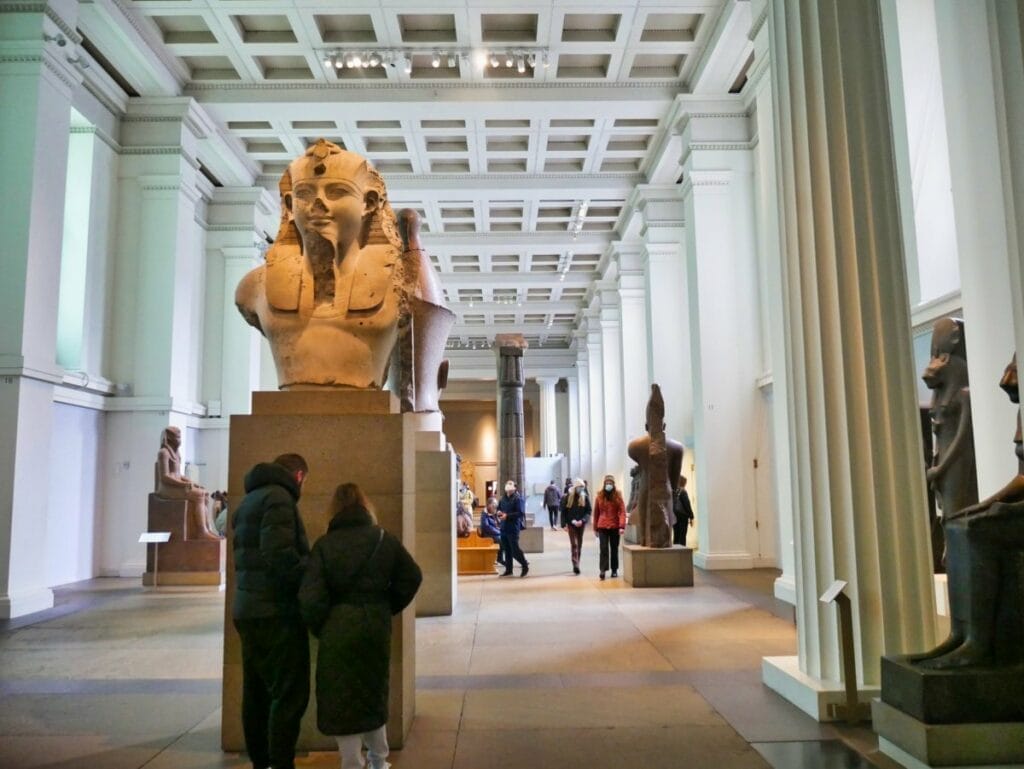
But if you have very young kids who are going to want more of that interactive experience or lots of bright colors or moving images, then I would skip the British Museum.
If you do visit as a family, the British Museum has a fantastic collection of family activities here and “Museum Missions” to take part in to keep them engaged.
British Museum Map
Want a map of the British Museum? Find it here .
Eating at the British Museum
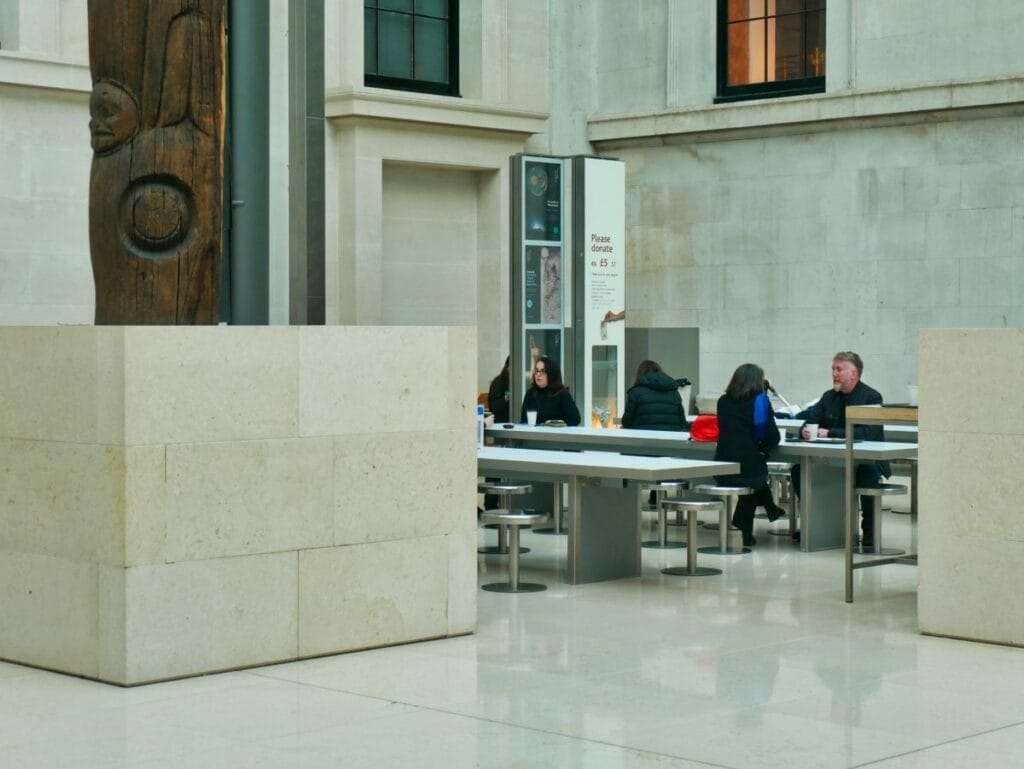
The British Museum has a couple of options for food and drinks, both of them highly recommended.
The first one is the Court Cafes, located on the ground floor with lots of long table seating and plenty of options like sandwiches, salads, snack cakes and ready-to-eat cold pastas.
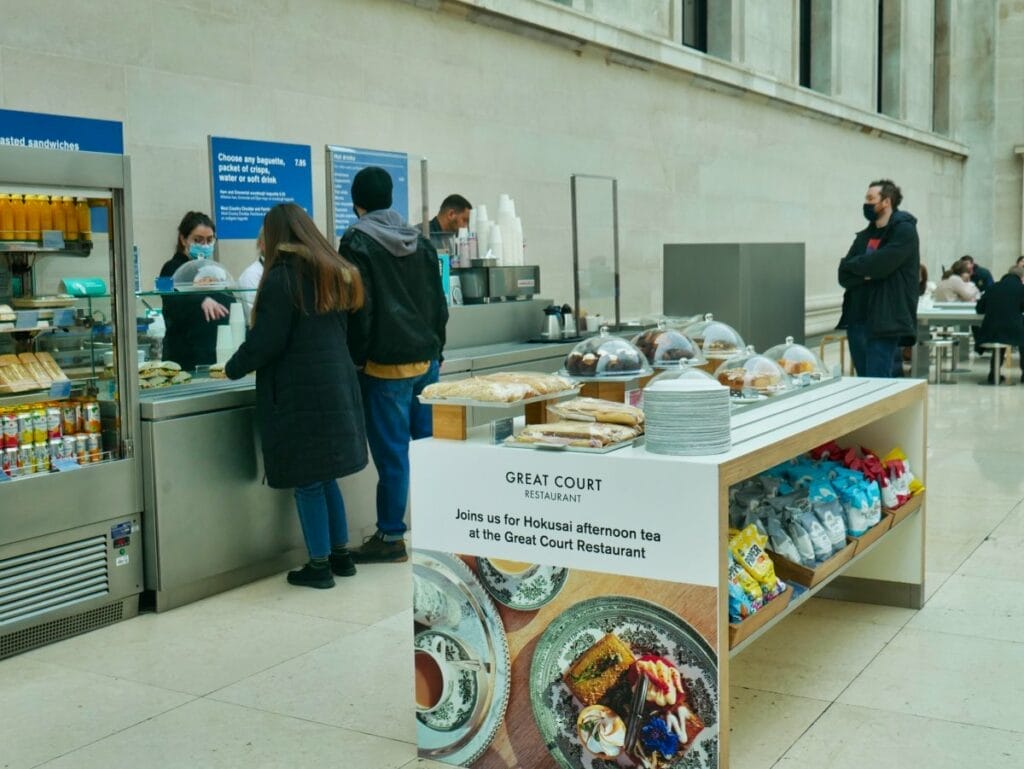
This is my favorite go-to because of the incredible atmosphere while inside the main floor.
When the sun streams in, it’s just an absolutely gorgeous atmosphere to eat some lunch.
Then there’s a pizza place, as well as a coffee lounge (see the map for locations), but most importantly if you’re looking for something a bit different is the Great Court Restaurant.
This restaurant, at the top of the British Museum, is a full sit-down restaurant for breakfast and lunch and afternoon tea, with waiters and regular restaurant etiquette (ie, not a casual café).
I would highly recommend trying the afternoon tea here – you get to sit under the beautiful glass tiles of the roof of the British Museum and the price for the afternoon tea beats a lot of the very expensive afternoon teas in London while still ensuring you get an authentic experience with good service.
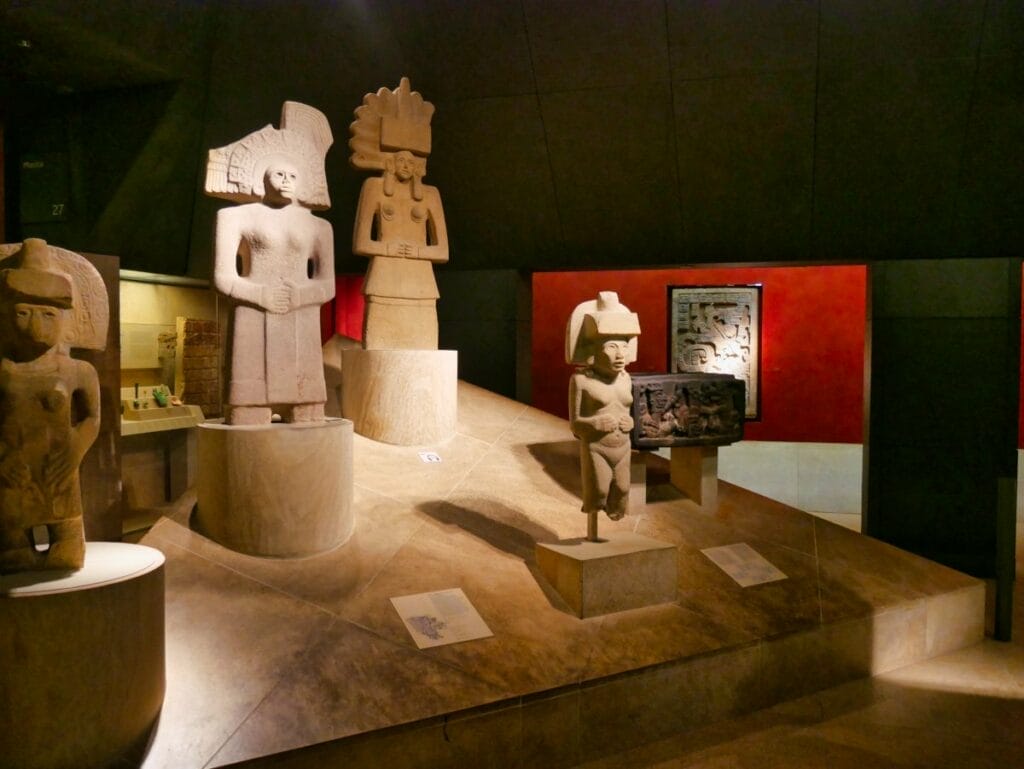
There is an audio app that you can use to help you explore the museum on your own if you want to check out one of the best things to do in London with an app.
It’s a small fee per download, and you can find it here .
This is great if you’re interested in an audio guide, but don’t want to pay the cost of a live tour.
Expert commentary on over 250 objects in the museum will make you feel like you’ve truly explored it rather than just walking around and nodding at old artifacts.
British Museum Live Tours and Tour Guide
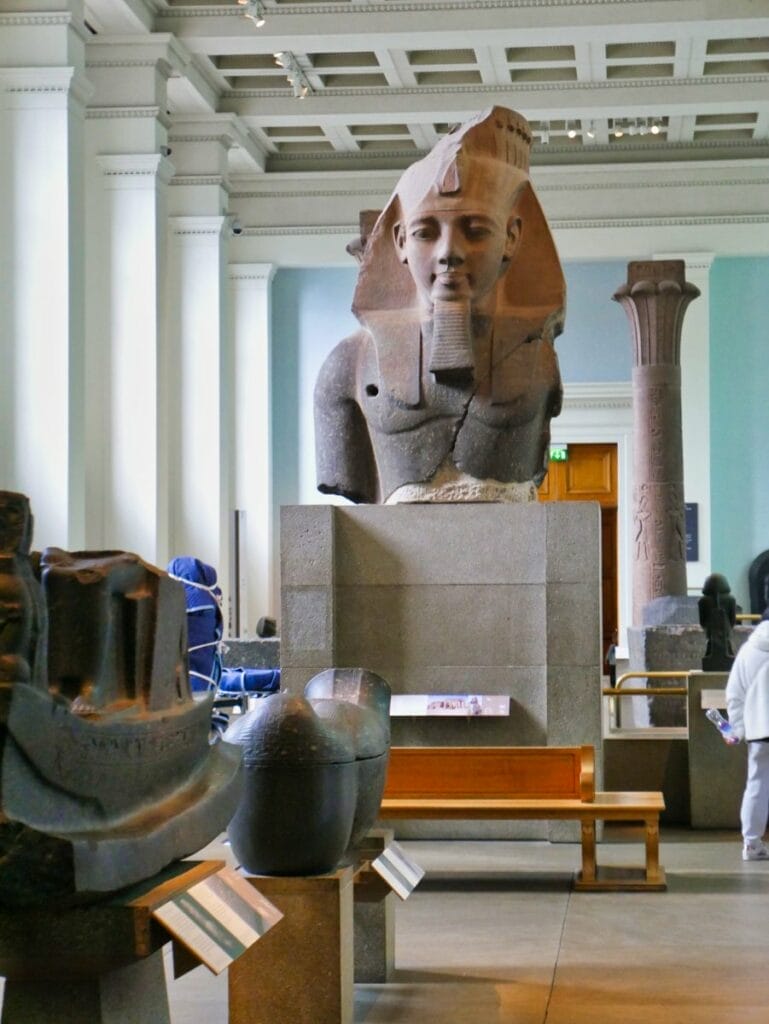
Want to take a tour of the British Museum so you don’t miss out on experienced knowledge of the artifacts (or maybe you just are so overwhelmed by how big it all is that you’d rather have someone show you around?)
That’s not a problem!
The museum offers a variety of tours, both paid and free, that you can book onto in advance here .
These museum tours are relatively short in length, however, so if you’re looking for someone to really show you around the museum on a full-length tour, I would go with this British Museum exclusive guided tour.
>> Click here to check pricing and availability for the exclusive British Museum guided tour.
Attractions near the British Museum
The British Museum, being so centrally located, is really close to some of London’s other famous attractions and is a short walking distance from:
- Wellcome Collection
- Charles Dickens Museum
- The Postal Museum
- Foundling Museum
- British Library
- Oxford Street
- Covent Garden
Other British Museum FAQs
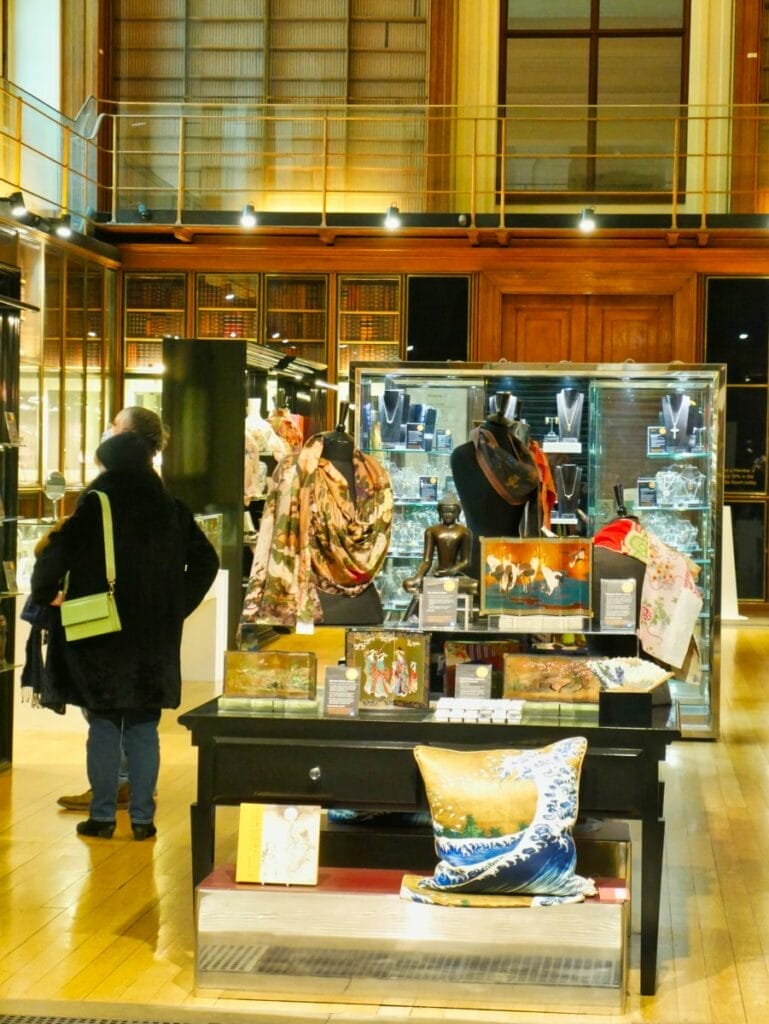
Yes! There is WiFi throughout the museum for guests to use so you can connect to it if you need it while on property.
Yes, every visitor must go through the security checks which is a bit like airport-style security (without the extra hassle of things like taking your shoes off).
There is a cloakroom where you can store some items, but oversized luggage is not allowed, which includes any luggage with wheels.
You can use your camera within the British Museum, but it must be without flash and there may be a couple of areas where photography is prohibited, so read the signs!
Get to the British Museum at opening for the lowest crowds – they build throughout the day, and only drop off right before closing.
Heading to London? Want the best tips?
Check out my Ultimate Guide to London for Visitors. Using text, images and video, this guide is packed full of tips, tricks, safety advice, knowledge on how to get around and what to do, and more!
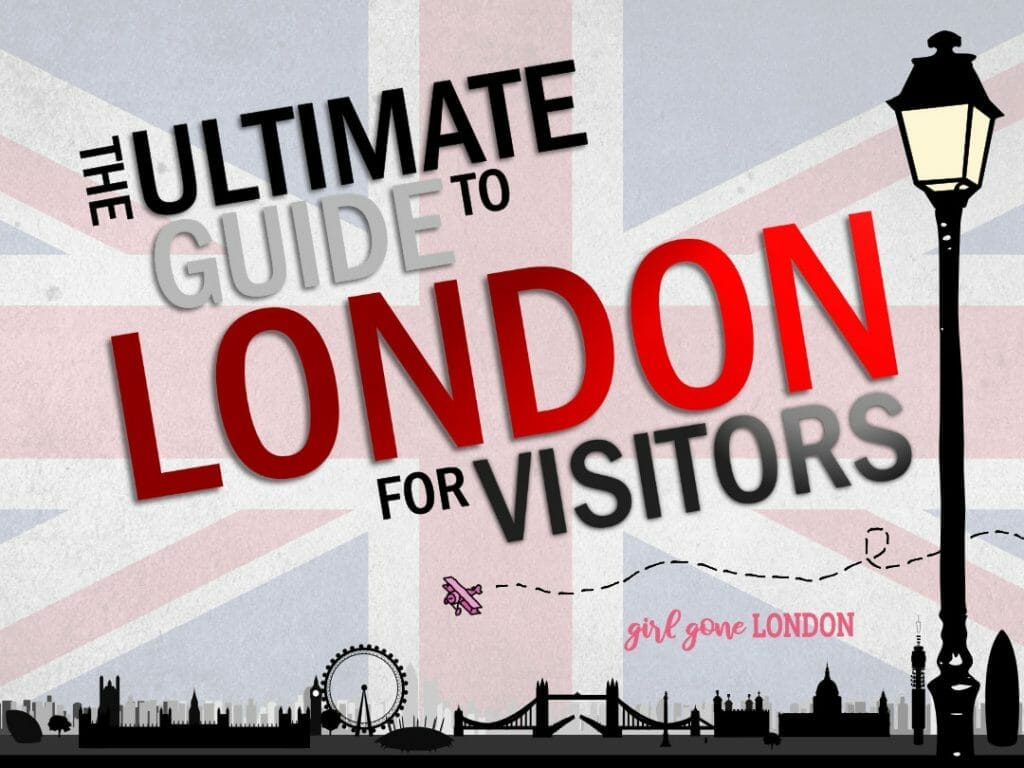
Moving to the UK or already an Expat?
Grab my book which covers moving to the UK, struggles I faced and that you might face too, and uplifting advice to help you along the way! Available in hard copy and on Kindle.
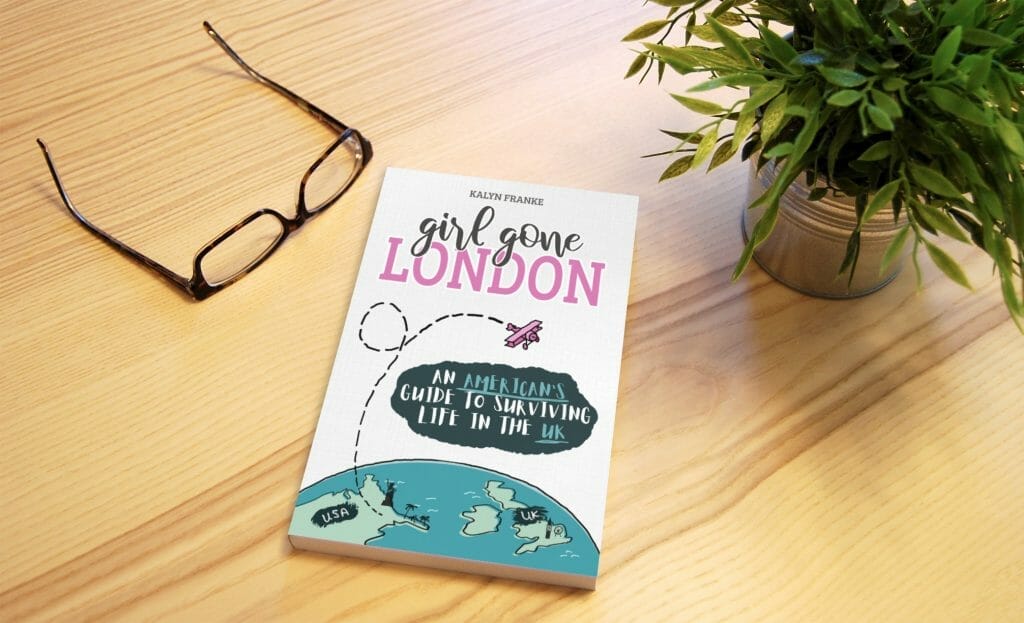
Leave a Comment Cancel Reply
Your email address will not be published. Required fields are marked *
This site uses Akismet to reduce spam. Learn how your comment data is processed .
- Skip to main content
- Skip to primary sidebar
- Skip to footer

How To Visit The British Museum in 2024: Tickets, Hours, Tours, and More
Eddie Saint-Jean Last Updated: October 26, 2023
Interested in exploring two million years of human history and culture in one place? You’re not alone. The British Museum is the UK’s top attraction and draws huge numbers of visitors, so it’s a good idea to be prepared for your visit. In this guide, we share everything you need to know about how to visit the British Museum from hours to tours, what to see, and a brief history.
Pro Tip: Planning what to do on your trip to London? Bookmark this post in your browser so you can easily find it when you’re in the city. Check out our guide to London for more planning resources, our top London tours for a memorable trip, and the top things to do in London .
Visiting the British Museum: What We’ll Cover
The British Museum is the world’s first public national museum with free admission. Founded in 1753, the museum houses an astonishing eight million artefacts in over 60 galleries spanning two million years of history from six continents.
It is the UK’s most popular attraction, welcoming 5.9 million visitors. If you’re planning to visit, it’s a great idea to be prepared. In this guide, find out what you need to know to visit the British Museum. here’s what we’ll cover:
- Opening hours and tickets
- How much time to budget for your visit
- What to see in the British Museum
- Guided tour options
- Facts and history of the British Museum
- Places to eat nearby
British Museum Opening Hours and Tickets
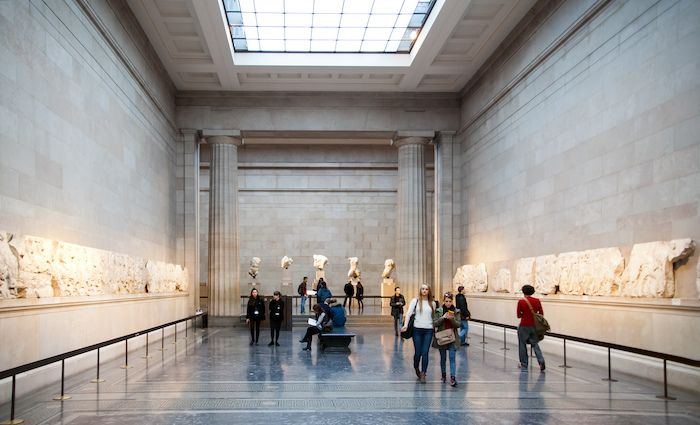
Opening Hours:
The museum is open every day from 10 am to 5 pm. On Fridays, it stays open until 8.30 pm.
A booked time slot will get you guaranteed entry. As mentioned before, it is the UK’s top attraction and has a massive amount of visitors. So, despite this neoclassical building’s vast size, booking a ticket removes the admission hassle.
It’s free to visit the British Museum, but there are also priced special exhibitions. Throughout the year, the museum presents fascinating special exhibitions, which they feel will be popular with visitors. For example, “Hieroglyphs: unlocking ancient Egypt” is on until February 2023 and tickets cost £18 for Adults.
Address: Great Russell St.
How Long To Spend in the British Museum
Short answer: 3 hours
The museum is a huge building and has a total collection of around eight million artefacts (obviously not all on display). However, you could budget for 2 hours if you already have a general idea of which exhibits you want to see.
But, in truth, 3 hours will enable you to absorb a considerable amount of the museum’s content just by wandering around. If you have a short break after your first 1.5 hours, you’ll be refreshed and energized for the rest of your visit.
That said, you could easily spend a whole day seeing all of the museum’s items and exhibits. The advice we have given takes into account the practicalities of spending 6-8 hours in a museum. So, it all depends on how much you want to see and how much time you have.
Popular London Tours
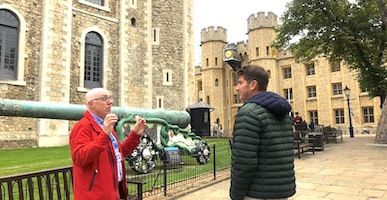
Best Selling Tour
Legends and Lore Tour of the Tower of London
How can you explore London’s top attractions without getting overwhelmed? By joining this guided small group tour! With 1,000 years of history and acres of buildings, the Tower of London is easier to explore and understand with the help of your local guide. Best of all, you’ll even see the famous crown jewels and have a boat ride down the River Thames.
Top Selling Tour
London Walking Tour with Westminster Abbey and Changing of the Guard
This is the perfect tour for someone who wants to get to know the real Westminster Abbey. With skip-the-line entry, you get some quiet time in the nave of the abbey with your guide and small group before exploring the tombs of notable kings, queens, philosophers, and more. Depending on the day, you’ll even get to see the Changing of the Guard ceremony at Buckingham Palace.
Not ready to book a tour? Find out if London tours are worth it .
What To See in the British Museum
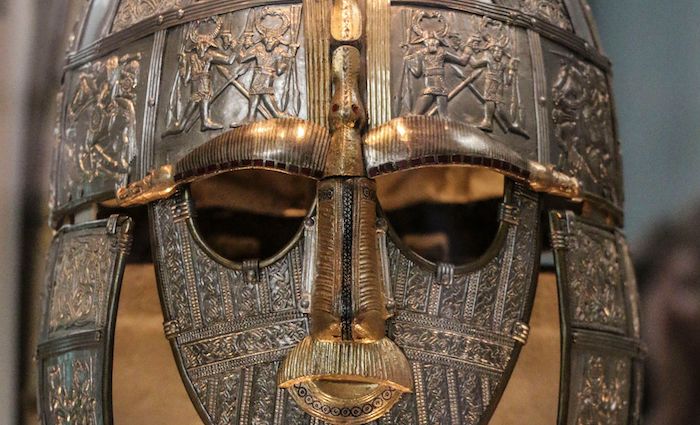
The British Museum’s collection spans two million years of history across six continents. To say there’s a lot to see in this massive museum would be an understatement.
There are more than 60 galleries exhibiting items like the Rosetta Stone, one of the most visited objects in the museum, and the Sutton Hoo Helmet. It may be difficult to decide which to see. Here are our recommendations on what to see when you visit the British Museum. For more in-depth descriptions, history, and images, check out our article on the top things to see .
- The Younger Memnon (Room 4 – Egypt)
- Oxus Treasure (Room 52 – Ancient Iran)
- Kakiemon Elephant (Room 92-94 – Japan)
- Mechanical Galleon (Room 39 – Clocks and Watches)
- Lewis Chessmen (Room 40 – Medieval Europe, 1050–1500)
- Royal Game Of Ur (Room 56 – Mesopotamia, 6000–1500 B.C.)
- Aztec Serpent (Room 27 – Mexico: 2000 B.C. – A.D. 1521)
- Ife Head (Room 25 – Africa)
- Assyrian Lion Hunt Reliefs (Room 10 – Assyria)
- Sutton Hoo Ship Burial (Room 41 – Europe, A.D. 300–1100)
- The Rosetta Stone (Room 4 – Egypt)
In addition to the galleries you’ll see above, you’ll also enjoy these rooms:
- The Parthenon Sculptures (Rooms 18a and 18b)
- Egypt/The Rosetta Stone (Rooms 4, 61-66)
- The Roman Empire (Room 70)
- Assyria (Rooms 6-10)
- Ancient Greece/Alexander the Great (Rooms 12-23)
- China and South Asia (Room 33)
- The Islamic World (Rooms 42-43)
British Museum Tour Options
If you’re planning a trip to the British Museum, you should perhaps look beyond this brief guide and consider our more in-depth guided tours. An expert guide will present the histories of the world and its earliest civilizations in an easily understood way.
We have already mentioned how it can take 3 hours to see the exhibits on your own but more likely 6-8 hours to see everything. A knowledgeable guide will remove the stress of you having to work out what to see and where. And they’ll cover the exhibits in a more reasonable time so that you have an interesting and memorable visit.
British Museum Tours and Audio Guides
The British Museum offers a few different guided tours from their free 40-minute Eye-opener tour to their Around the world in 90 minutes tour covering the museum’s highlights for £14 per person. Check the official website for booking details.
They also offer a variety of themed audio guides in their app for anyone interested in doing a self-guided tour of the museum. You can purchase the full bundle per language for £4.99 (introductory offer) or themed tours per language for £1.99–£2.99
Not ready to book a tour? Check out the best London tours to take and why .
Facts and History of the British Museum
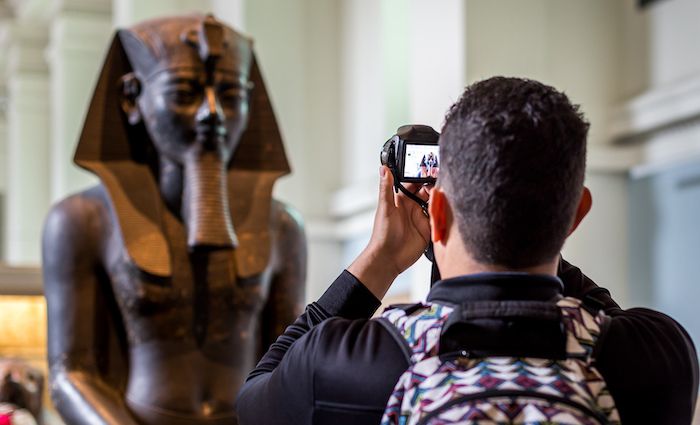
- Founded in 1753, it’s the world’s first national public museum with free admission for all.
- The museum has over eight million artifacts in its collection
- The collection spans two million years.
- In recent years, it has competed with the Tate Modern as the UK’s most popular visitor attraction. But now it is the most popular, with 5.9 million visitors.
- Egyptian exhibits are amongst the most popular. The Tutankhamen Exhibition of 1972 drew record attendance. However, the Rosetta Stone, another Egyptian artefact, has proved the most popular over the centuries.
- In the Japanese Galleries, you’ll find a full-size replica of a traditional Japanese tea house
- The Parthenon Marbles are a popular attraction today but also proved to be a hit with prominent individuals in centuries past. Mozart visited in the 1760s and 19th-century Romantic poets Lord Byron and John Keats wrote poems about it after visiting.
Places To Eat Nearby
We’ve listed the museum’s restaurant below, but there’s also the Court Café, the Montague Café, and a pizzeria inside the museum. Also, there are other options not too far beyond the museum gates, in case you are seeking more inspired dining. For more options, see our article on the best restaurants near the British Museum .
Great Court Restaurant : ££ | Afternoon Tea —For a distinctly English treat, you can enjoy afternoon cream teas or other beverages. But there are also two and three-course lunches. However, if you’re looking for something lighter, they have sandwiches, snacks, and pastries.
Hakkasan : ££££ | Cantonese Restaurant —This Michelin-star restaurant is a worthy treat if you want to complete your museum visit with a little pampering. Dishes such as Dim Sum and Hakkasan stir-fries are on the menu.
Zeo’s London : ££ | Mediterranean Cuisine —Quality food at a reasonable price. The restaurant has a light, airy feel and a bit of a buzz about it. Mediterranean cuisine is not tied to one nation and includes dishes such as lamb shank and also pan-fried salmon.
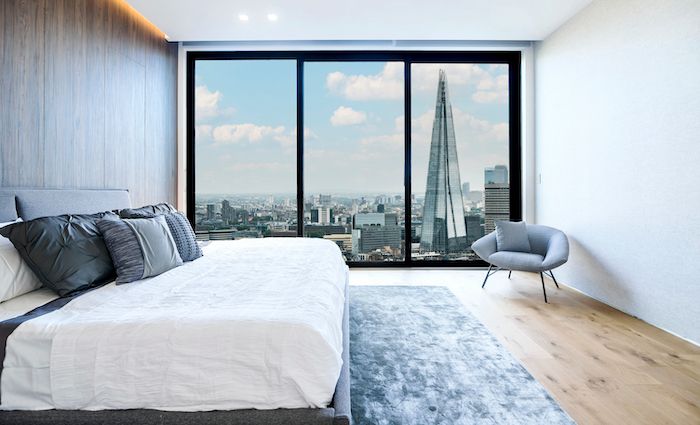
Find the best places to stay
Where To Stay in London
Deciding where to stay at a great hotel in London can take some effort since it’s a massive city. Make your decision easier with our list of the best neighborhoods and hotels in London.
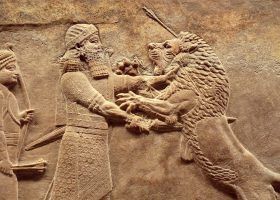
Reader Interactions
Leave a comment cancel reply.
Your email address will not be published. Required fields are marked *
- Travel Blog
- In The Press
POLICY & TERMS
- Cancellation Policy
- Terms & Conditions
- Privacy Policy

The Secret London Guide To The British Museum
Planning a visit to the British Museum can feel pretty darn overwhelming, but fear not: Secret London is here to give you the lowdown, as always.
In the pantheon of museums in London , one stands out from the crowd. By virtue of being the biggest, oldest , and for a long time (before the Natural History Museum came and knocked it of its pedestal) the most popular of London museums; the British Museum is a titanic cultural attraction. It’s also one of many free things to do in London , giving it that extra penny-pinching appeal. So, with all this going for it, planning a visit to the British Museum may seem pretty overwhelming. Well, fear not: as always, Secret London is here with the lowdown.
What is the British Museum?
So, just incase you didn’t know; the British Museum is the world’s oldest national public museum . Inside, you’ll find collections of art , literature , and other artefacts telling the story of human history. Over six million people visit each year, which is more than the population of Libya – impressive, right? It consistently held the title of the most popular tourist attraction in the UK for over a decade – and is now still in an admirable third position.

The British Museum was founded in 1753 and opened in 1759, making it older than the USA(?!). It was created by an Act of Parliament to accommodate the collection of Sir Hans Sloane , who also gives his name to Sloane Square . A vast number of treasures have since been acquired by the museum over the years. The British Museum is split into sections corresponding to areas and time periods. You’ll find separate wings for Ancient Egypt, Ancient Greece and Rome, Asia, Europe, the Middle East, and the Americas , spread across three floors. Oh, and a drop dead gorgeous glass roof covering the stunning Great Court.
The British Museum has become so big over the years that it’s had to expand twice – once to a site in Kensington , the other now located in St Pancras . These expansions became, respectively, the Natural History Museum and the British Library . The British Museum also has a fabulous Reading Room , which has finally reopened to the public recently (yippee).

What should I see at the British Museum?
It may be called the British Museum , but most of the objects have actually been loaned from other countries or purchased from private collections. You also can’t escape the fact that many items were claimed by underhand tactics of the British Empire , leading several countries to demand the return of their artefacts. Since there are eight million objects here, we’ve selected the top things to see at the British Museum. You can thank us later.
1. The Rosetta Stone

Not just an expensive language guide, you know. The ancient translation tool is written in both Egyptian and Greek, and is the reason we can read hieroglyphics. Carved in 196BC, it also happens to be the British Museum’s most visited object, so you’ll need to be patient to get to the front.
2. Easter Island moai

Easter Island is a bit of a trek, but since the British Museum has one of the famed heads in its collection, you only need go as far as Bloomsbury.
3. Egyptian mummies

The British Museum has a long history with mummies, having hosted Tutankhamun’s treasures in 1972. Today, you can find sarcophagi, the mummy of Katebet, and mummified pets, including cats and fish. Just lovely…
4. Parthenon sculptures

These figures, also known as the Elgin Marbles, have seen a never-ending saga of ownership which shows no sign of stopping. Greece claims they were illegally taken after Lord Elgin made a dodgy deal with the ruling Ottoman Empire, whilst the UK maintains it was a legal purchase under the laws of the time. Regardless of which side you take, you can enjoy the beautiful sculptures in a gigantic hall in the British Museum’s west wing, and learn a lot about ancient Greece in the process.
5. Aztec serpent

A fascinating lot, were the Aztecs. When they weren’t busy indulging in ritual sacrifice, the Aztec created beautiful objects, like this stunning double-headed serpent mosaic. Find it on the ground floor of the British Museum.
6. Olduvai stone chopping tool

It looks fairly unremarkable, until you discover it’s the oldest human-made artefact in the British Museum. At a whopping 1.8 million years old, this stone tool is quietly one of the most impressive objects in the entire building.
7. Egyptian scutpture

When you think of the British Museum, this is probably the first thing that comes to mind. A huge hall, full of busts of Egyptian gods and kings, this is one of the museum’s most impressive sights.
8. Winged bulls of Assyria

They once guarded the gates in the ancient cities of Nimrud and Khorsabad in Iraq, but now the bulls take up residence at the British Museum, looking downright imposing.
9. Mausoleum of Halicarnassus

It was one of the seven wonders of the ancient world, and you can find parts of it at the British Museum. Statues from the mausoleum can be found in the Ancient Greek wing on the ground floor.
10. Shrine of Amaravati

In a corner gallery of the British Museum, you’ll find the Great Shrine of Amaravati, painstakingly recreated to fill the whole room. It was one of the oldest and largest Buddhist shrines in India, and is definitely worth a visit.
11. Lampedusa cross

Not everything in here is ancient. The Lampedusa Cross was acquired by the British Museum in 2015, to commemorate the 359 refugees who died when their boat sank off of the coast of Lampedusa in October 2013. A local carpenter, Francesco Tuccio, carved the cross out of the wreckage of the boat, making a hugely poignant artefact in the process.
The Round Reading Room at the British Museum
Located smack bang in the Great Court of the British Museum is the Round Reading Room . The room was once the site of the British library, before it relocated to its current home in St Pancras in 2008 . It also dates back all the way to 1857 ! As such, it has been privy to such visitors and students ranging from Arthur Conan Doyle to Karl Marx, Oscar Wilde, Bram Stoker and even Lenin.
Following the relocation of the library , the room was used as an exhibit space briefly, before finding its current role: storing the museum’s archive of books and papers and objects that trace the museum’s history. The British Museum is now offering guided tours of the space – giving bibliophiles a chance to check out the legendary archival room.

The tour will only last twenty minutes, and the volunteer tour guides will be keeping a close eye on visitors – so you won’t be able to sneak off and investigate the centuries old documents. And, no, it’s not a library so you won’t be able to borrow any of the books. Nonetheless, it’s a pretty impressive sight for bookworms and history buffs alike .
Tours run once a week and are completely free , but do require signing up ahead of time. Oh, and they only have space for 20 people in each tour group, so you’ll definitely want to give yourself plenty of time to book ahead. Find out when the next tour is running and book your space here .

Anything else I should know?
We’d advise you get to the British Museum nice and early if you want to beat the crowds and avoid the queues. Alternatively, the British Museum is open late on Fridays , giving you ample time to wander round the galleries after most people have left. Picking up a map for £2 will give you their “Top 10 objects to see” tour, which will take you through most of the major galleries (a cheap paper copy, without the top 10, is available for a “suggested donation”). Alternatively, audio guides can be rented for £7, and come in 10 languages.
The British Museum is free to enter , but donations are welcome; you’ll find donation points scattered around the open areas. Small bags can be left in their cloakroom, but large luggage (such as wheely cases) is forbidden. For a fee, a nearby hotel may hold onto them for you. A number of tours, events and exhibitions are held at the British Museum – find the schedule and how much they cost here .

Food and drink
No fewer than four eating options at the British Museum. Casual fares come in the form of the Court Cafe and the Coffee Lounge . The museum also offers an on-site Pizzeria and the Great Court Restaurant is the fancier spot , serving seasonal mains under the museum’s stunning roof.
Best spot for photos
The Great Court is massively Insta-worthy . But for a different view of the British Museum, head to the viewing platform on Level 3 for a dramatic elevated vista .
Before you go
The British Museum is the largest indoor space mapped on Google Street View . If time is tight, browse around ahead of your visit and pick out what you want to see.

Final word of warning
Be on the lookout for the vengeful ghost of an Egyptian god. Amun-ra is supposedly a resident of the Egyptian Room, and he’s been rumoured to snatch people from nearby Holborn station . Spooky, right?
The British Museum is open daily from 10am-5pm (10am-8.30pm on Fridays) and the nearest station is Tottenham Court Road. Find out more and plan your visit here , or check out a guided tour of the British Museum here .
TYPE IN YOUR SEARCH AND PRESS ENTER
- Search Please fill out this field.
- Newsletters
The British Museum: The Complete Guide
Gautier Houba / TripSavvy
London is home to dozens of memorable museums, from the Tate Britain to the National Portrait Gallery, but one of its most extensive collections of objects and art can be found in the British Museum. The national museum, which is free for visitors in its permanent collection, has an expansive range of cool stuff, including Egyptian mummies, the Rosetta Stone and the Sutton Hoo ship burial. It welcomes travelers of all ages (who doesn't love a mummy?) and its experience can be tailored to any attention span or interest. Be sure to include the museum in your London itinerary, even if it's just to come in to see the impressive Great Court or to catch a glimpse of some historic samurai armor. Here's everything you need to know ahead of your visit.
Museum History
Founded in 1753, the British Museum first opened its doors to the public in 1759 as the first national museum to cover all fields of human knowledge. The museum was created by an act of Parliament and was intended to invite in "all studious and curious persons," meaning that the initial visitors needed to apply for tickets. In the 1830s, the museum began to welcome in more and more visitors, and today more than six million people explore the British Museum each year. Its collection now includes around eight million objects, which cover two million years of human history, and the Reading Room, completed in 1857, has become a popular place to seek out knowledge.
The museum's much-photographed Great Court, which is known in full as Queen Elizabeth II Great Court, is the largest covered public square in Europe. The two-acre room, designed by Foster and Partners, was redesigned reopened in 2000 (when it was opened by the Queen herself). Inside, visitors can find the Lion of Knidos, among other famed antiquities.
Chris J Ratcliffe/Getty Images
What to See and Do
The British Museum can be overwhelming as there's a lot to see in the museum's permanent collection. Some of the highlights include the Egyptian sculpture gallery, where you'll find the Rosetta Stone and the Statue of Ramesses II, and the Africa Galleries, which include both antiquities and contemporary pieces. The entire world is represented throughout the galleries, from Oceania to Japan to Britain itself, so it's best to plan a route that suits your interests. The British Museum's museum map offers several possible trails to follow through the rooms, including one suited to kids and another that looks specifically at LGBTQIA+ history.
The museum typically hosts one or two special exhibitions alongside their collection at any given time, which you can check out in advance on their website. The special exhibitions are usually hosted for several months and most require a purchased tickets to enter. The institution's calendar also includes regular lectures, talks and special events, some of which are free to visitors.
Once you've fully explored the galleries and exhibitions, head to one of the museum's eateries. These include the Court Café, a casual spot inside the Great Court serving sandwiches, snacks and drinks, and the Great Court Restaurant, which serves morning tea and coffee, lunch and afternoon tea, as well as dinner on Fridays when the museum is open late. There is also the Pizzeria, Montague Café and the Coffee Lounge, and food trucks can frequently be found in the outdoor area of the museum along with tables.
Oli Scarff/Getty Images
How to Visit
The British Museum is an extremely popular attraction for visitors to London and it's easily accessible in the central part of the city. Because the museum is convenient to other attractions, including the West End and Trafalgar Square, and because the permanent collection is free, a visit to the British Museum can be as long or short as you want. Whether you prefer to stop by to see the Rosetta Stone (which can be found not far from the entrance) or you want to fully explore all the exhibitions, the museum is pretty hassle-free.
Visitors are required to purchase tickets for any special exhibitions (which can be done in advance online or at the ticket office), but entry to the regular collection is free and doesn't require a ticket. The museum is open Monday through Sunday, closing during the year only from December 24-26, and last entry is at 3:30 p.m. daily. The museum also hosts late hours on Fridays , with the galleries open until 8:30 p.m. alongside events and talks.
Getting There
The British Museum is located on Great Russell Street near Russell Square and can be accessed easily from several London Underground stations. The museum is equidistant from the Russell Square, Tottenham Court Road, Goodge Street and Holborn Tube stations, which serve numerous London Underground lines. There is also a variety of London bus lines that stop close to the museum, including the 14, 168, 176, 19, 24, 38, 68, 8 and 98. Use the Transport for London Trip Planner tool to find your best route to the museum.
For those who prefer not to take public transportation (although that's the recommended way to get to the British Museum), look for London's black cabs or use the Uber app to hail a ride share car. When leaving, head to the taxi rank on Great Russell Street at the museum's main gates. There is no parking at the museum so it's best to avoid driving your own car into Central London when visiting. Bicycle racks are also available inside the gates of the Main Entrance on Great Russell Street.
You can, of course, also walk to the museum, which is a great way to see the surrounding area on a nice day. From Big Ben or Trafalgar Square, stroll north through Covent Garden (where you'll find lots of shops and restaurants) to find the British Museum (and be sure to check out Russell Square, a beautiful park, on your way out).
Chris Jackson/Getty Images
Tips For Visiting
- All visitors are required to pass through a security check, which includes a bag search, at the entrance to the British Museum. Be sure to be prepared and avoid bringing in large luggage. Wheeled suitcases and sports equipment are not allowed inside the museum. Luggage storage can be found at nearby train stations, including Euston, King's Cross and Charing Cross.
- The British Museum has an easy access route for those with accessibility issues. The route is available for disabled visitors and visitors with strollers and/or children under five, as well as museum members. Strollers are allowed, but must be kept with you during your visit. Wheelchairs can be reserved in advance for those who need them.
- Free Wi-Fi is available to all visitors. Look for the "British Museum WiFi" network on your device and enter your name and email address to access.
- Most galleries allow hand-held flash photography and video recording as long as it's for private purposes, although tripods, monopods and selfie sticks are not allowed. Watch for signs indicating when photography is prohibited (often in special exhibitions).
- Don't miss the British Museum Shop, which sells a huge array of souvenirs and gifts, from books to jewelry to small replicas of some of the museum's memorable works.
- If you plan to make several visits to the British Museum or simply want to support the institution, consider purchasing a museum membership. There are several levels of membership and all include unlimited free access to the special exhibitions and access to the Members' Room.
Related Articles
More related articles.

- Accommodation
- Food & Drink
- UNESCO Heritage Sites
- Antigua & Barbuda
- Cayman Islands
- Isle of Man
- The Netherlands
- Travel Planning
- 60 Best Tech Gadgets & Gifts
- Silver Life
- Work with The Silver Nomad
England , The British Isles
The british museum, london – 30 top tips for your visit.
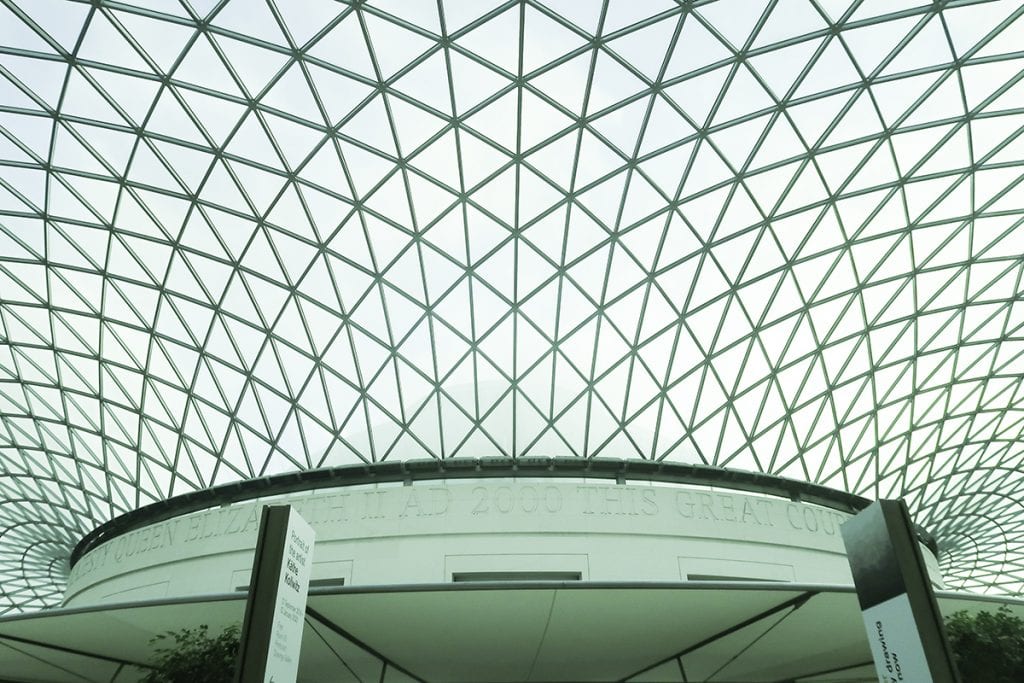
Visiting the British Museum in London can be awe-inspiring, but it can also be overwhelming. There are more than 60 galleries you can explore for free, and other exhibitions and events you can book.
The British Museum is one of my favourite London attractions and one of the many free museums in London. Here are 30 British Museum tips to help you make the most out of your visit.

What you can expect in this post:
The British Museum: Tips Before You Go
Download the british museum app.
You can download the British Museum app for either Apple or Android devices. The app will help you easily access opening times, maps, tours and much more. It also gives you three choices of what to see in 1, 3 or 6 hours, which you can follow on your phone.

Research and Explore online
Check out the British Museum website for an overview of what you can see and do and for the latest British Museum exhibitions. This will help you narrow down what you want to see.
Have a must-see list and make a plan
With a whole world of exhibits to see, it is easy to get bamboozled and end up aimlessly wandering around, looking but not really seeing anything. If there are particular galleries you would like to see, maybe Ancient Egypt, Chinese Jade or Greece 1050BC to 520BC, then write them down with their room number and make a plan of your route.
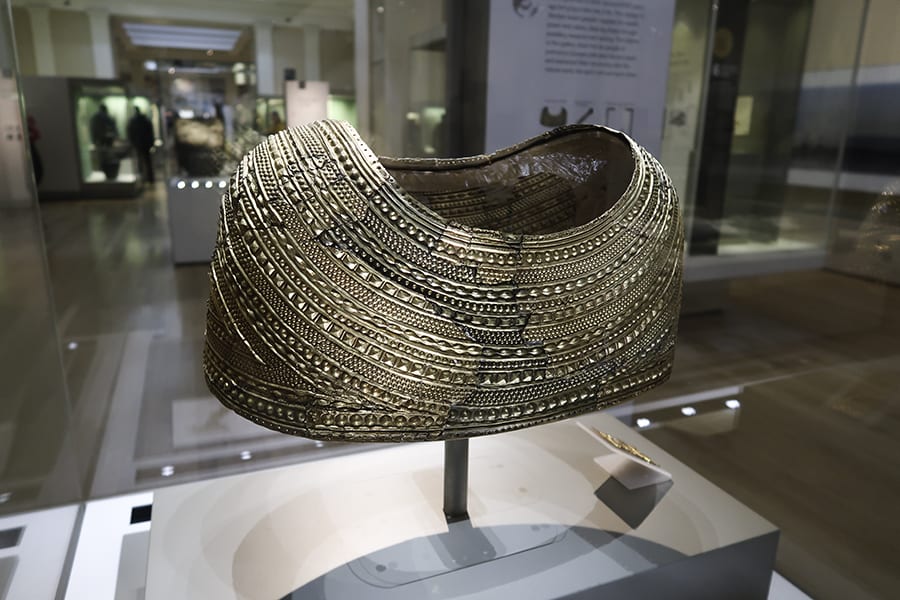
Check the British Museum Opening Hours
The British Museum is open all year-round but is closed 1 January and 24–26 December.
The Great Court : 09:00 to 17:30 and 09:00 to 20:30 on Fridays The Galleries : 10:30 to 17:30 and 10:30 to 20:30 on Fridays Ten minutes before closing they start clearing the galleries.
Save your money: The British Museum is Free
The British Museum is free to get into, but you do have to book in advance if you have a group of more than 10. There are charges for some exhibitions, guided tours and the audio guide.
Help with Accessibility
The British Museum does all it can to be accessible to all. With self-operable lifts, accessible toilets, British Sign Language guides and audio descriptive guides and much, much more to offer people with disabilities. For a full description of what assistance is available, visit the Accessibility page on the website.
Time your visit
The Museum is at its quietest first thing in the morning, just after opening and after 16:00 near closing time.
Be prepared and buy your ticket in advance
If there are any special exhibitions you want to see, it is worth booking your tickets in advance. Not only will it save you time when you get into the Museum, but also you get to fast-track through security.
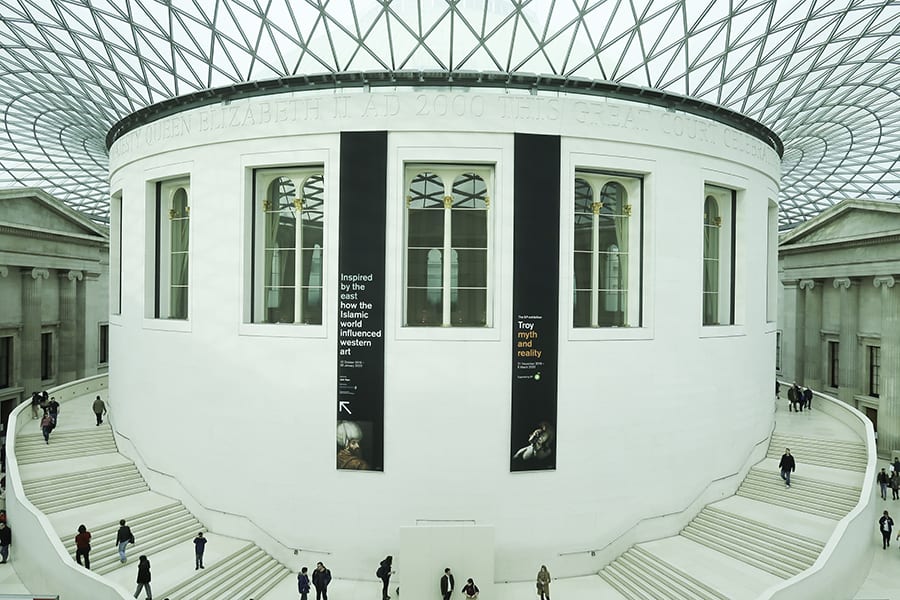
Where is the British Museum?
The address of the British Museum is: Main entrance: The British Museum, Great Russell Street, London WC1B 3DG Second entrance: Montague Place, London WC1E 7JW
Plan your route
By Tube: There are four tube stations near the museum:
- Tottenham Court Road: 5-minute walk
- Holborn: 7-minute walk
- Russell Square: 7-minute walk
- Goodge Street: 8-minute walk
By Bus: You have many options to get a bus which will drop you within walking distance of the Museum
- New Oxford Street: 1, 8, 19, 25, 38, 55, 98, 242
- Tottenham Court Road (northbound)/Gower Street (Southbound): 14, 24, 29, 73, 134, 390
- Southampton Row: 59, 68, X68, 91, 168, 188
Consider becoming a Member
There are advantages of becoming a member of the British Museum. Membership costs from £64 ( correct at January 2020 ) and will give you free unlimited entry to all of the exhibitions, invitation to a programme to special events, 10% discount in the Museum shops and cafés and use of the exclusive Members’ Room and Members’ cloakroom. For more details see the Membership page on the British Museum website.
The British Museum: Tips When You Get There
Security checks.
Before entering the British Museum, you will have to go through a security check. Bags will be checked and any unsuitable objects will be removed.
If you have already bought a ticket or are a Member, have young children under 5 or an accessibility issue, you can use the fast-track lane.
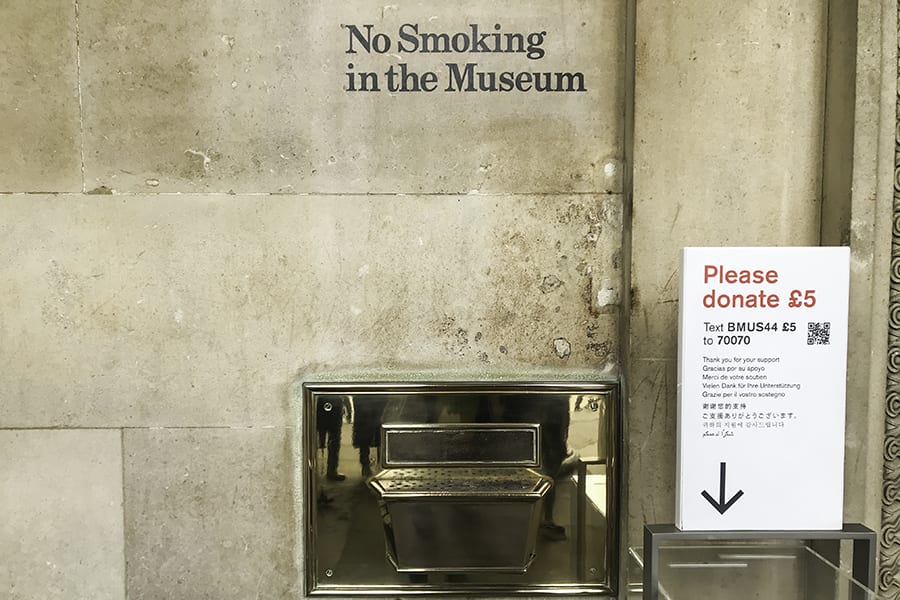
Smoking is not allowed in the museum including vaping. If you need to smoke, you can smoke outside and use the bins provided for the cigarette butts.
Don’t carry your coat, use the cloakroom.
It can get pretty warm walking around the Museum, but you can leave your coats, umbrellas and bags at the cloakroom immediately to the left of the main entrance. There is a charge depending on what you are leaving, but fold-up pushchairs are looked after for free.
For current charges please check the Facilities on the British Museum website .
Travel Light, leave your heavy bags behind
You cannot bring any oversized bags or luggage into the museum. Wheeled cases and sports equipment are also not allowed. Bags up to 8kg can be left in the Cloakroom.
Go old school with guidebooks and Maps
You can buy guidebooks and maps in 13 different languages to help guide you around the galleries and exhibitions. These are available either in the foyer or in the shop. You can also pick up a free Museum map on the ground floor.
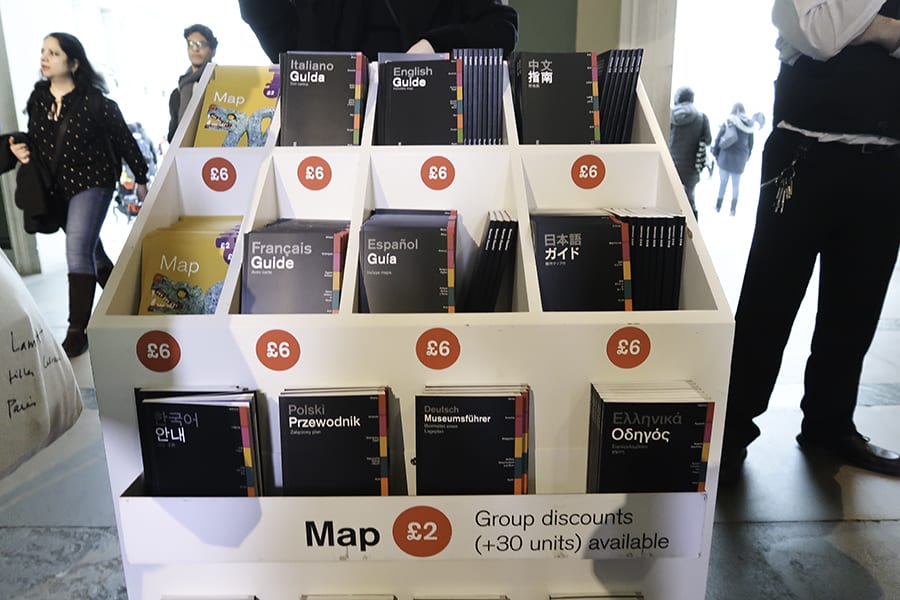
Help is at hand
The information centre is on the left-hand side as you enter in the Great Court. It is open from 09:00 to 18:00 (20.30 on Fridays). If you have lost something you can also enquire here.
There are museum staff in all the galleries who will help guide you around if you have lost your way, or need help with anything.
Listen while you walk
You can rent an audio guide to take you around over 275 of the British Museum highlights of the museum with commentaries, video, images and text to give you more in-depth information.
You can choose to take a themed audio tour, or just the highlights and most popular items. The audio guide keeps track of what you see and listen to and at the end of your tour, it creates a digital souvenir which you can send to yourself.
The audio guides come in ten languages: English, French, German, Italian, Spanish, Russian, Japanese, Korean, Mandarin and Arabic and you can pick them up on the left-hand side of the Great Court. Price: Adults £7, Concessions £6 (Members, Students, Jobseekers, under 19s, over 60s).
Start at the top
The top galleries tend to be less crowded and it can be better to start there and work your way down. There are eight floors in total to explore in the British Museum, from Level -2 up to Level 5. They are all connected via stairs or lifts.
You don’t need to do it all
There is nothing worse than trudging around a museum looking at things that just don’t float your boat. Don’t feel as if you have to see all of the 95 galleries. If you are not interested in Medieval Europe or even Europe in general, you can skip it and concentrate on what really interests you.
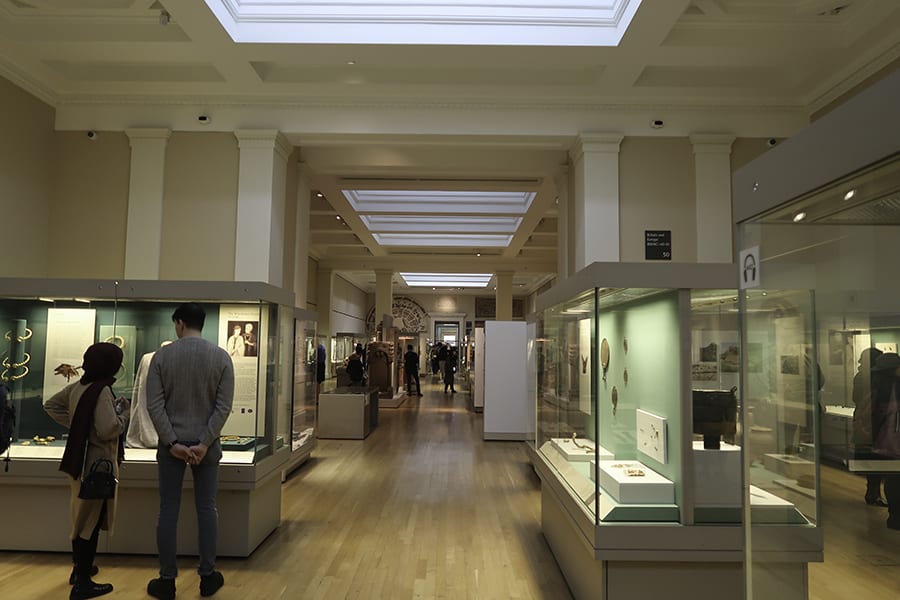
Take a British Museum Guided Tour
The British Museum offers several different tours including Around the World in 90 minutes, 30-40 minute Eye-opener tours, Hands-on tours, lunchtime talks and Friday night spotlight tours. To find out what is on and what the costs are, have a look on the website .
Lights, Camera, Action!
You can use a camera, even with a flash to take photos or video for private purposes, in most of the galleries. There are signs and notices where you are not allowed. However, you are not allowed to use tripods, monopods or selfie stick inside the Museum.
Be Creative
You are allowed to sketch any of the items in pencil. So take your pads and pencils and get drawing!
Taking the kids
Museums can be stuffy and boring for children, but the British Museum is kid-friendly. There are activity backpacks and art materials to borrow, explorer trails and workshops held during the school holidays.
For younger visitors who need sensory support in busy environments, there is a special backpack.
There is plenty to keep them occupied and engaged. For more inspiration check out the family page on the website or get more information from the dedicated Families Desk which is open at the weekend and during school holidays.
Families can also to bring their picnic to the Ford Centre for Young Visitors on the Lower Floor at weekends and during school holidays.
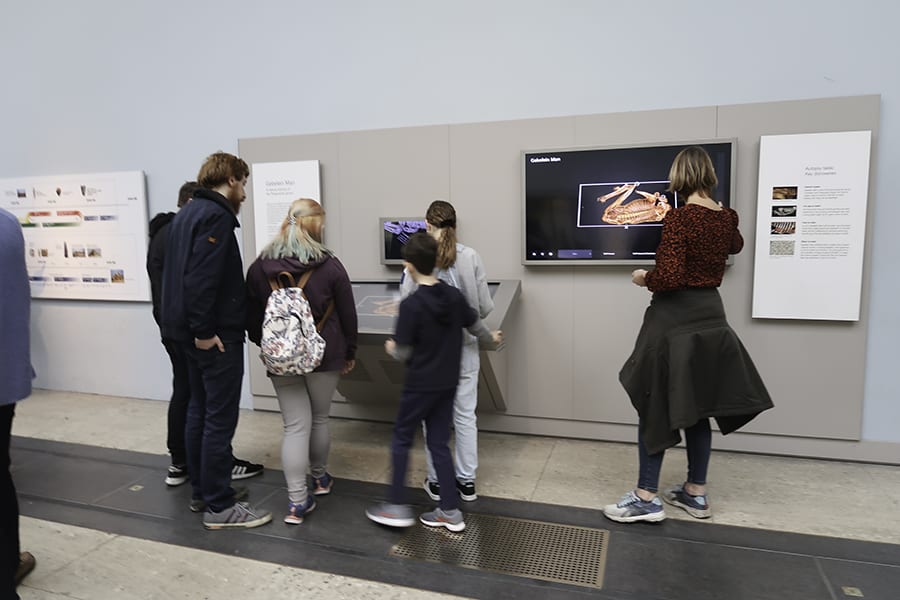
Be kind to your feet and wear comfortable shoes
As you are gazing at all the exhibits, you may not realise how far you have actually walked. Comfortable shoes or boots are highly recommended, so if you are fond of wearing heels, maybe bring some flats with you to walk around in and change back to your heels when you leave.
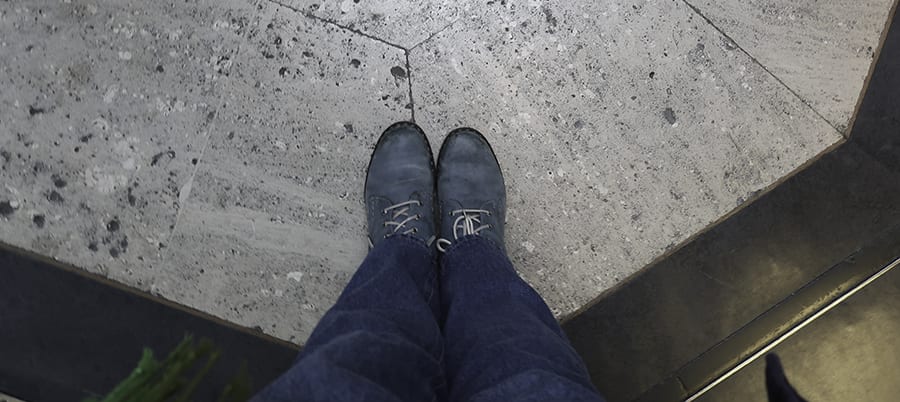
YOU MIGHT ALSO LIKE: The SS Great Britain – Bristol’s No. 1 Attraction
Food and Drink at the British Museum
Eating and drinking in the galleries are not allowed.
However, if you are after a quick coffee, snack, lunch or even dinner on a Friday, there are plenty of options for you to choose from:
The Great Court Restaurant is at the top of the staircase on Level 3, just in front of the entrance to Room 56. It is light and airy and you can order your morning tea or coffee, lunch or afternoon tea. There is also a dinner service on Fridays.
For more information see the Great Court Restaurant page .

The Court Café is on the ground floor, to the back of the Great Court. On sale are sandwiches, snacks, salads and delicious cakes, as well as hot and cold drinks. There are long sharing benches just beside it and on the other side of the Great Court.
Opening hours: 9.00–17.30 (closes 20.30 on Fridays, except Good Friday)
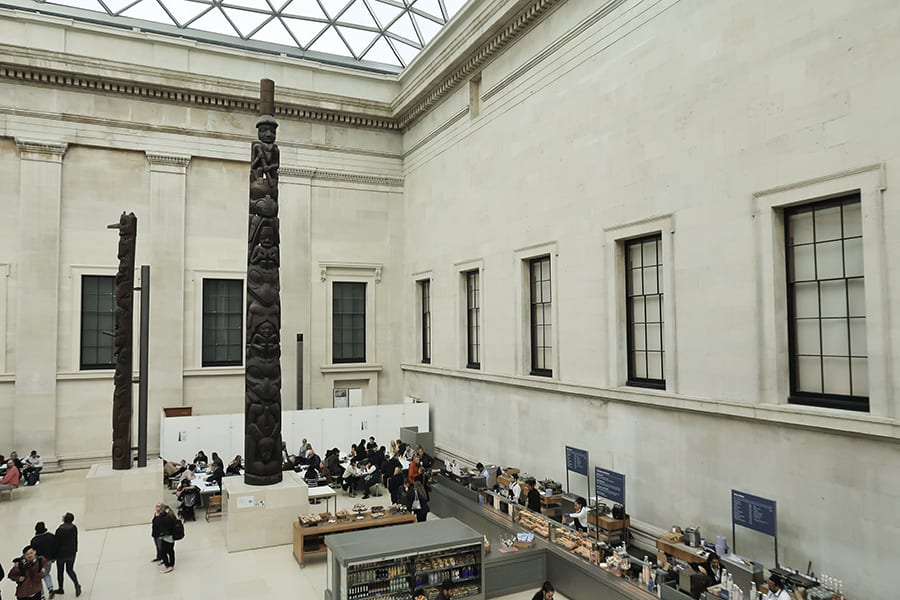
The Pizzeria is just beyond the cloakroom and shop on the ground floor, just turn immediate left as you come through the Main Entrance and follow the signs. Perfect for fresh pizzas, salads and perfect ice-creams.
For those intolerances or dietary requirements, the Pizzeria offers both vegetarian and vegan pizzas and also gluten-free bases.
Opening hours: 11.00–16.00 daily
The Montague Café is great for a quick coffee and a bite to eat. It is inside the Montague Street entrance.
Opening hours: 11.00–16.00 (seasonal variation may apply)
The Coffee Lounge is a on the first floor above the main entrance. You can get to it either by climbing the main staircase (the South Stairs), taking the lift or after going through the rooms on the first floor.
There is plenty of places to sit and you can buy a range of hot or cold drinks, salads and savouries and of course lovely cakes.
Just beyond it is the balcony with an amazing view over the Reading Room and the Great Court.
Opening hours: 11.00–17.00 (seasonal variation may apply)
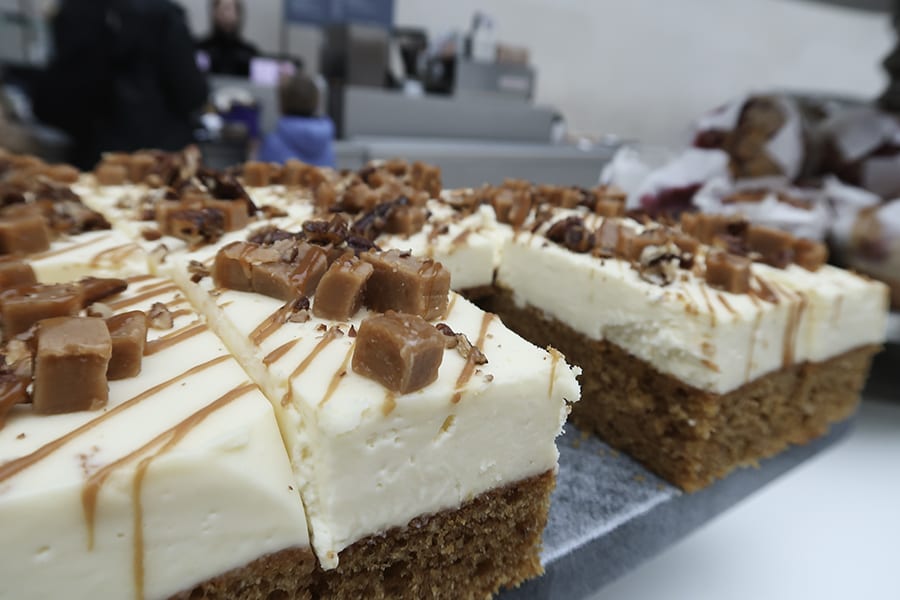
Outdoor dining , depending on the weather, you might want to sit outside. There are two food trucks selling hot food and desserts with a seated area next to them where you can enjoy your food.
Opening hours: 10.00–17.00 daily and 17.30–20.15 on Friday evenings
Something to remember your visit
There are several shops spread around the ground floor: the Book Shop to the right of the stairs; Collections Shop on the left and the Great Court shop at the back. There is also a smaller shop on the left as you enter, opposite the Cloakroom.
Keep connected: free wifi
There is free wifi available to visitors. You connect to ‘British Museum WiFi’, fill in your name and address and then you can use the wifi during the visit.
For all you geocachers out there, there is a sneaky little geocache round the corner from the British Museum (GC7Y45) which is a nice little extra. If you don’t know what geocaching is, check out the post on Geocaching .
Tours with Get Your Guide
If you want to book at British Museum private tour, try one of the Get Your Guide British Museum Tours.
Don’t forget to pin this article so you can come back to it later

Larch has a base in Scotland, from where she set off on her travels around the world. Now semi-nomadic, she combines her website design business and her drone flying with exploring the world. Her passion for travel aims to inspire over 40s to explore new destinations and expand their horizons.
14 thoughts on “ The British Museum, London – 30 Top Tips for Your Visit ”
The British Museum is now on my special list – have to visit this place!
Fantastic Piotr. Let me know what you think when you visit.
Wow, now we have a complete guide to this amazing museum. Thank you so much! We are really looking forward to visiting the UK soon, and this will be a great reference for us.
Thank you Susan, you will have an amazing time!
A comprehensive and beneficial read. 8 floors of wonderment and cafe for lunch, I could happily spend a whole day there.
I will join you Marilyn! The hours just slip by when you are there
I’ve visited London a few times but still have yet to make it to the British Museum. I’m grateful to have found your post to use as a guide for a future visit. I’ll definitely download the app. I love the idea of having a built-in itinerary based on how long you can visit. It can be overwhelming deciding where to go when you visit a museum.
Fantastic news Brooke. I agree it can totally overwhelm you. I hope you make it to the British Museum soon.
Great tips Larch, especially to get there early. You’ve reminded to go and have another look – this time of year will be quieter too!
I love the space, light, architecture and of course all the exhibits!
Thanks Larch! Saving this for our trip to the UK this summer and autumn.
Fantastic Laurie, it is an amazing place. Maybe even worth more than one visit.
Well done! All visitors could benefit from your guide.
Thank you Kamron!
Comments are closed.
Last updated on September 11, 2021 by Larch

Matador Original Series
How to crush the british museum in one day.
T he British Museum is immense. You could spend months trying to see and learn about the 80,000 objects displayed, but if you’re not a Londoner and can’t pop in daily during your lunch break to have a stroll in the galleries, you’ll need a plan to make your one-day visit worth it. To ensure you get to see the most significant pieces in the museum without getting a serious case of museum fatigue, we’ve asked British Museum expert Michael Raymond and Londoner and art expert Luci Stephens to give us some hot tips on how to crush this massive museum in just one day.
Michael Raymond is an assistant curator at the Tate Modern. After studying history at the University of Sheffield, he moved to London to work as the project coordinator for the Asahi Shimbun Displays at the British Museum. For two years he worked in the exhibitions department, organizing temporary exhibitions with objects from across the collection, whether Japanese paintings or ancient cuneiform tablets.
Luci Stephens is the head of 20th-century art at Clarendon Fine Art, a contemporary art gallery located in Mayfair, London. Luci has a BA and MA in Art History from Kingston University and University College London and has worked at the National Gallery. Every chance she gets, she explores the nooks and crannies of the British Museum in search of a piece she has not yet seen.
Before you go: the #1 piece of advice for visiting the British Museum
- The best times to visit
Free tours and audio guides
Where to start your visit, five must-see pieces and why they matter, most underrated pieces to check out, what you can skip.
- What you didn’t know
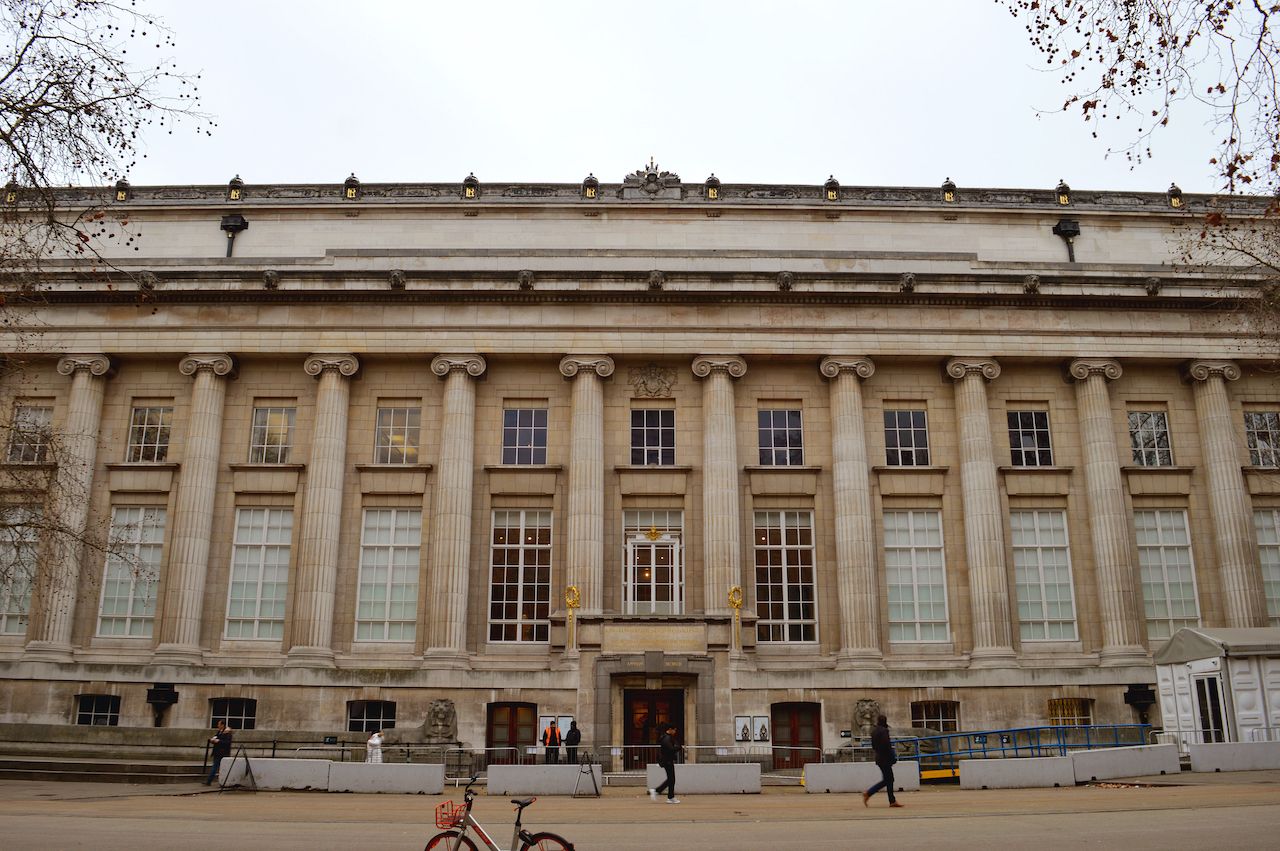
Photo: douglasmack /Shutterstock
Michael knows the museum like his back pocket and has not one but two pieces of advice he believes are essential for visitors to remember.
First, he urges you to use the back entrance on Montague Place to get in faster. This entrance is not as fancy as the Great Russell Street entrance with its stairs, colonnade, and pediment, but you can always go back around the building to snap a picture later. And don’t worry, no matter what entrance you choose, you’ll be able to access the Great Court and admire its magnificent glass ceiling.
Second, do yourself a favor and don’t bring large bags — you’ll have made a trip to the British Museum for nothing since they are not allowed inside. Leave your big items at the hotel and check out the galleries freely without being encumbered.
The best times to visit the British Museum
The museum opens at 10:00 AM daily and is usually busy from the get-go. A great option to avoid the crowds and get an early start is to book one of the special morning tours that start at 8:59 AM. The tours last one hour, don’t exceed 20 people, and cost $41.50 (£33). No matter what tours you choose, from a general introduction to the British Museum to a more specific presentation of Ancient Egypt artifacts, you’ll get a well-rounded, almost-private history lesson while everyone else lines up outside. Note that if you take a special morning tour, you need to use the main entrance on Great Russell Street.
If you want to see the collection freely, both Michael and Luci recommend Friday as the best day of the week to visit. Instead of closing at 5:00 PM, the museum stays open until 8:30 PM on Fridays, giving you the opportunity to see it in a different atmosphere. Friday is also the day when the museum hosts cool events like free demonstrations of the Japanese tea ceremony every second week, among others.
Although popular all year long, a visit in January or February will certainly be quieter than one in July or August.
Walking around to check out pieces at your own pace is a chill way to see the British Museum, but there are so many tours available that it’d be a shame to pass on trying one or two out — you’ll learn a ton, and it won’t cost you a penny.
The Eye-Opener tours are free, last 30 to 40 minutes, and take place daily, every 15 minutes from 11:15 AM to 3:15 PM. They are led by volunteers who will take you through the most popular parts of the museum to give you the lowdown on this particular part of the collection. There’s no need to book in advance — just be in the relevant gallery when it starts.
If you’ve followed our advice and decided to visit on a Friday, take one of the free, 20-minute Spotlight tours . Those tours focus on one topic (Death in Egypt, for example) or object (like the Rosetta Stone) to give visitors a brief but knowledge-packed talk.
If you’d rather remain independent during your museum visit, or if English is not your first language and you’re afraid you may not understand everything a guide would say on a tour, download the Audio App of the museum before your visit. The app provides expert commentary in five languages and allows you to access detailed descriptions of the most significant objects in the collection.
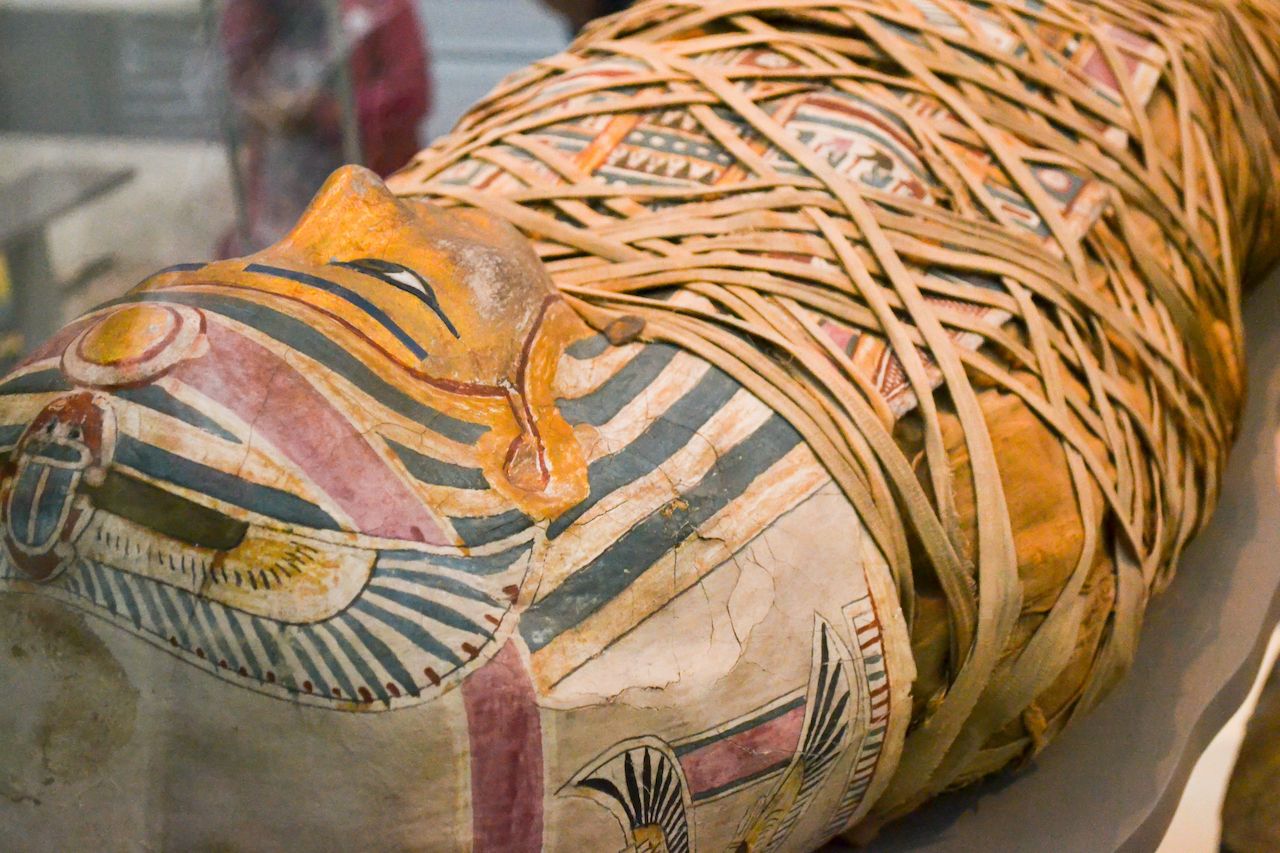
Photo: Matphotography /Shutterstock
If you’re not too far down the line to enter the museum in the morning, don’t waste any time and get yourself to rooms 62 and 63 on the third level to see the most famous objects in the museum: the Egyptian mummies. The museum has over 120 human mummies in its collection, as well as 300 animal mummies. While they are not all displayed, it’s very much worth hurrying up to those rooms to see the few that are there while the rest of the visitors are still on the main floor trying to figure out their way around.
Although we could easily include 10 more pieces on this list, if you want to get the highlights out of the way before you wander around freely to check out more niche objects, or take off to do something else entirely, Luci and Michael have selected five pieces that you cannot miss during your visit. (Luci recommends that you locate them on the museum map before your visit to save some precious time and beat the crowds.)
Note: All the pieces mentioned below appear in Neil MacGregor’s “A History of the World in 100 objects.” Neil MacGregor was the director of the British Museum between 2002 and 2015.
1. The Rosetta Stone

Photo: Jaroslav Moravcik /Shutterstock
Aside from the aforementioned Egyptian mummies, the Rosetta Stone is the most iconic object in the British Museum and the most-viewed item in any museum or gallery in the UK, according to our expert, Michael. There’s no right time to see the stone without the crowds unless you book a spot in the Introduction to Ancient Egypt special morning tour , which is greatly recommended.
The Rosetta Stone is a large grey stela with rough edges with the same text carved on it in Classical Greek, Demotic, and Hieroglyphics. Described as such, it does not sound like the most alluring object in the collection, but because it’s worked as the key to the understanding of the Ancient Egyptian civilization, it’s hugely important. Dating back to 196 BC, the stone’s inscriptions (which are the same decree in three different languages) led French Scholar François Champollion to crack the code of the Hieroglyphics language in the early 19th century. Thanks to his decipherment, the Hieroglyphics on other objects, in temples, on mummies, etc. were finally decoded, as were the mysterious rituals and traditions of a fascinating civilization.
Where to find it: In room four, in the Ancient Egyptian sculpture department right off the Great Court (on your right if you enter via Montague Place, on your left if you enter from Great Russell Street).
2. Parthenon sculptures, or Elgin Marbles
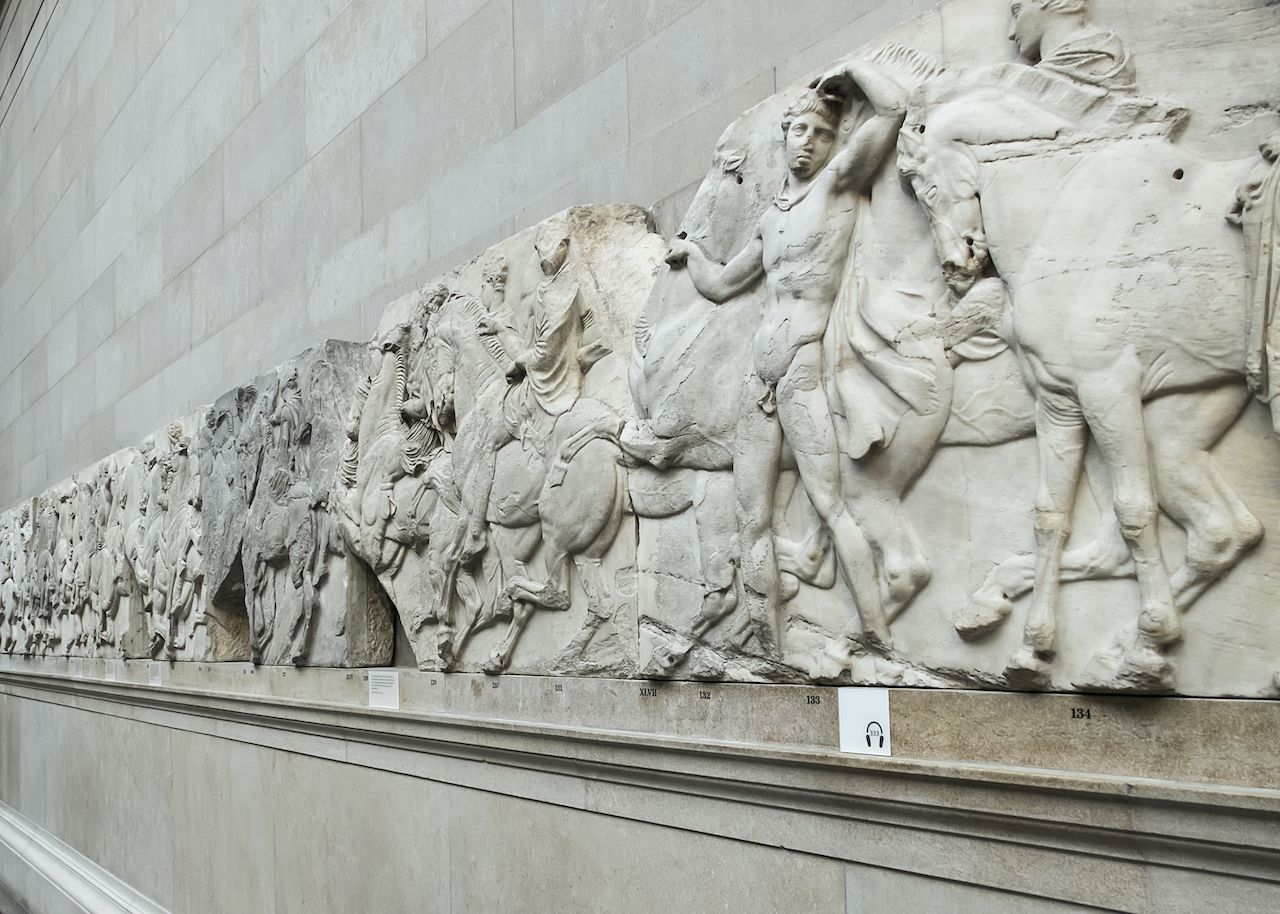
Photo: Giannis Papanikos /Shutterstock
The Parthenon sculptures, also known as the Elgin Marbles for Lord Elgin, the British ambassador to the Ottoman Empire who brought some of the sculptures from the Parthenon in Athens back to England, are a beautiful display of marble reliefs created around 440 BC.
Originally, the pieces you’ll see in the British Museum were placed on the outside of the Parthenon, a temple dedicated to Athena the Virgin located on the Acropolis, and were colored in red, gold, and blue. The reliefs, meant to present passages of Greek mythology, are large and intricately carved to create life-like characters and scenes — the facial expressions, body shapes, and drapery details are nothing short of mind-blowing. Michael adds, “They look so soft, luscious, and realistic, it’s difficult to believe it was hand-carved from cold, hard marble.”
Having been taken from Greece in the early 1800s, there is a lot of debate as to whether the Parthenon sculptures belong to the British Museum or they should go back to Athens. Wherever you land on this issue, the sculptures should be at the top of your must-see list.
Where to find them: In room 18, on the ground floor, in the Ancient Greece and Rome department.
3. The Lewis Chessmen
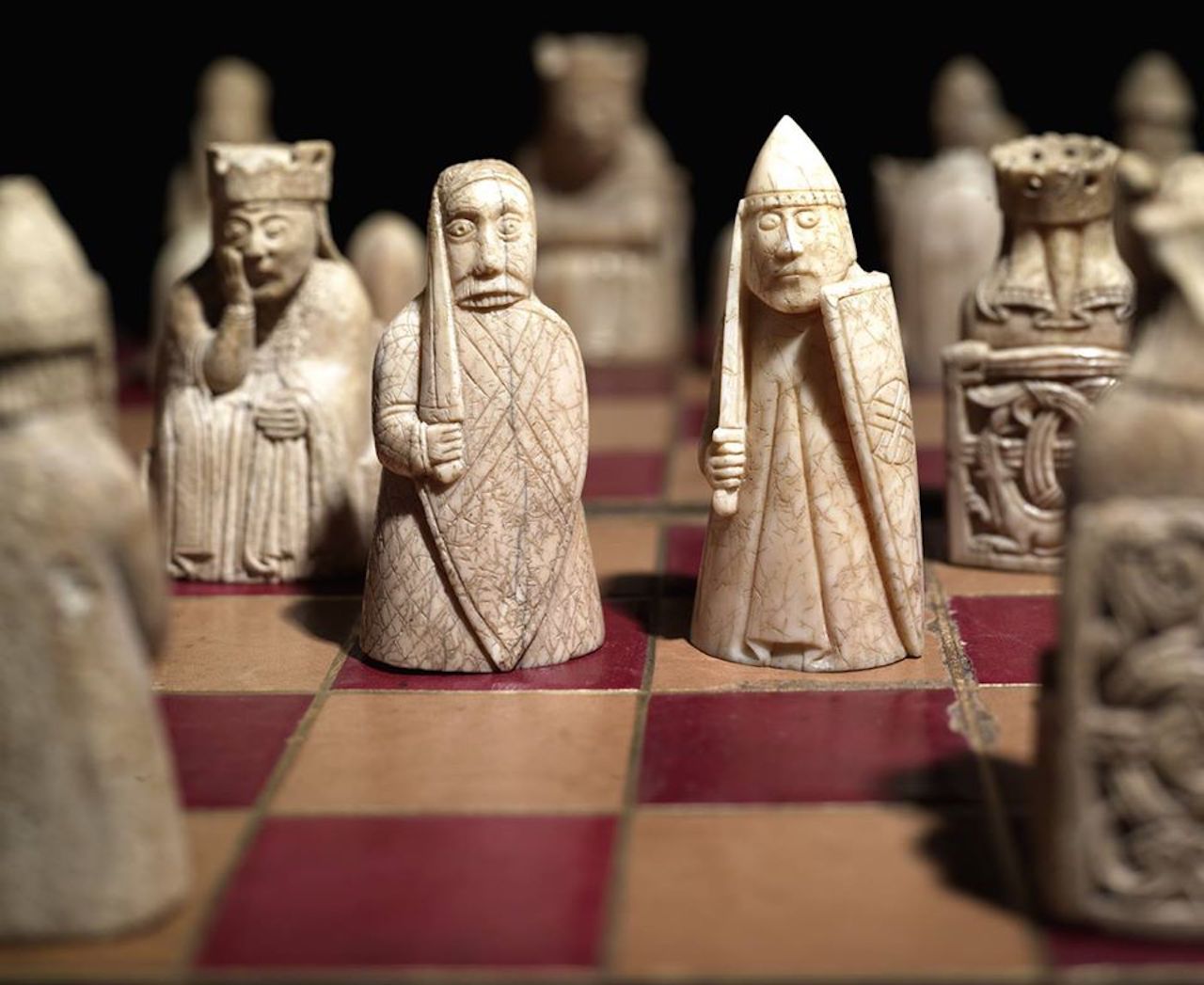
Photo: British Museum /Facebook
If you’ve watched Ron and Harry play wizards chess and thought the pieces they used were “wicked,” you’re in for a treat. The real-life chess pieces that inspired those you can see in Harry Potter and the Philosopher’s Stone are on display at the British Museum.
Called the Lewis Chessmen because they were found on the island of Lewis in Scotland, the pieces date back from between 1150 to 1200 AD and were found in 1831. The pieces were made of walrus ivory and whales’ teeth in Norway, but not all of them are intricately shaped — the pawns, the least powerful pieces in a set, are just simple slabs, while the bishops, rooks, knights, kings, and queens are detailed and unique characters. It is believed that some pieces were painted red to distinguish the two sides. Eighty-two chessmen from several sets are at the British Museum and 11 are at the National Museum of Scotland in Edinburgh.
In June 2019, a family in Edinburgh found a piece that they had purchased in 1964 for fewer than $10 at an auction in a drawer at their home. The rare, long-lost chessman, the missing piece of a precious set, was sold in July for nearly one million USD.
Where to find them: In room 40 in the Sir Paul and Lady Ruddock Gallery: Medieval Europe 1050–1500, on level three.
4. Hoa Hakananai’a (“Lost or Stolen Friend”) Moai statue

For centuries, the people of Rapa Nui (also known as Easter Island) built and erected colossal statues out of basalt on the coastline of their island to house the spirits of ancestors. Hoa Hakananai’a , built between 1000 and 1200 AD, is one of those monoliths, and it’s been on display in the British Museum since 1869. About seven feet tall, the statue is a simple yet extremely impressive carving. Visitors should make sure to check out the back of the statue, which bears symbols significant to the birdman religion, the cult that used to dominate the island.
Allegedly given to the officers of the British Ship Topaze by the people of Rapa Nui in the 19th century, “Hoa Hakananai’a” is today the center of much controversy. Spiritually important to the traditional inhabitants of Rapa Nui, they are now imploring the British government for its return.
Where to find it: In room 24 in the Africa, Oceania, and the Americas department on the ground floor. Straight ahead if you enter via Montague Place, straight on and just beyond the Great Court if you enter from Great Russell Street.
5. The double-headed serpent
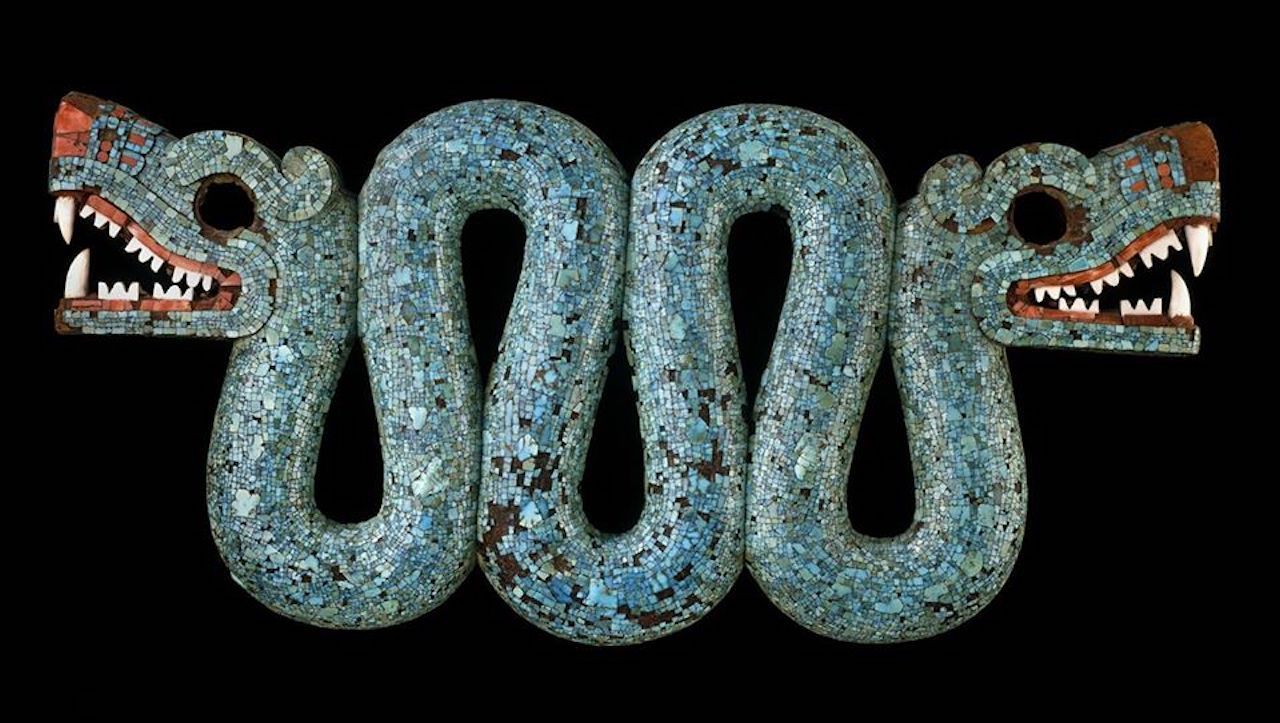
Before the invasion of the Spaniards in the 16th century, Mexico was part of the huge Aztec Empire that stretched all the way from Texas to Guatemala. For the Aztecs, turquoise was a profoundly prized stone believed to used during ritual ceremonies and worn by Aztec rulers to show off their greatness. Serpents motifs were highly symbolic in Aztec culture; double-headed serpents were thought to be the bearers of bad omens. This intimidating double-headed serpent, carved from a single piece of cedar between 1400 and 1600 in Mexico, is inlaid with 2000 pieces of that very stone to create a gorgeous effect of shimmering scales. A piece of jewelry, the turquoise mosaic was meant to be worn on the chess of its owner, likely an Aztec ruler, like a brooch.
The Aztec empire was destroyed by the Spaniards soon after their arrival, but remains of the great civilization like this piece provide proof of the incredible talent of its people.
Where to find it: In room 27, on the ground floor, in the Americas department.
If you still have time and energy after you’ve had a good look at the five must-see pieces mentioned above, take your time to meander the galleries in search of the three following pieces recommended by Michael. They may not be well known, but they are certainly worth a few minutes of your time — or more.
1. The “Mermaid”
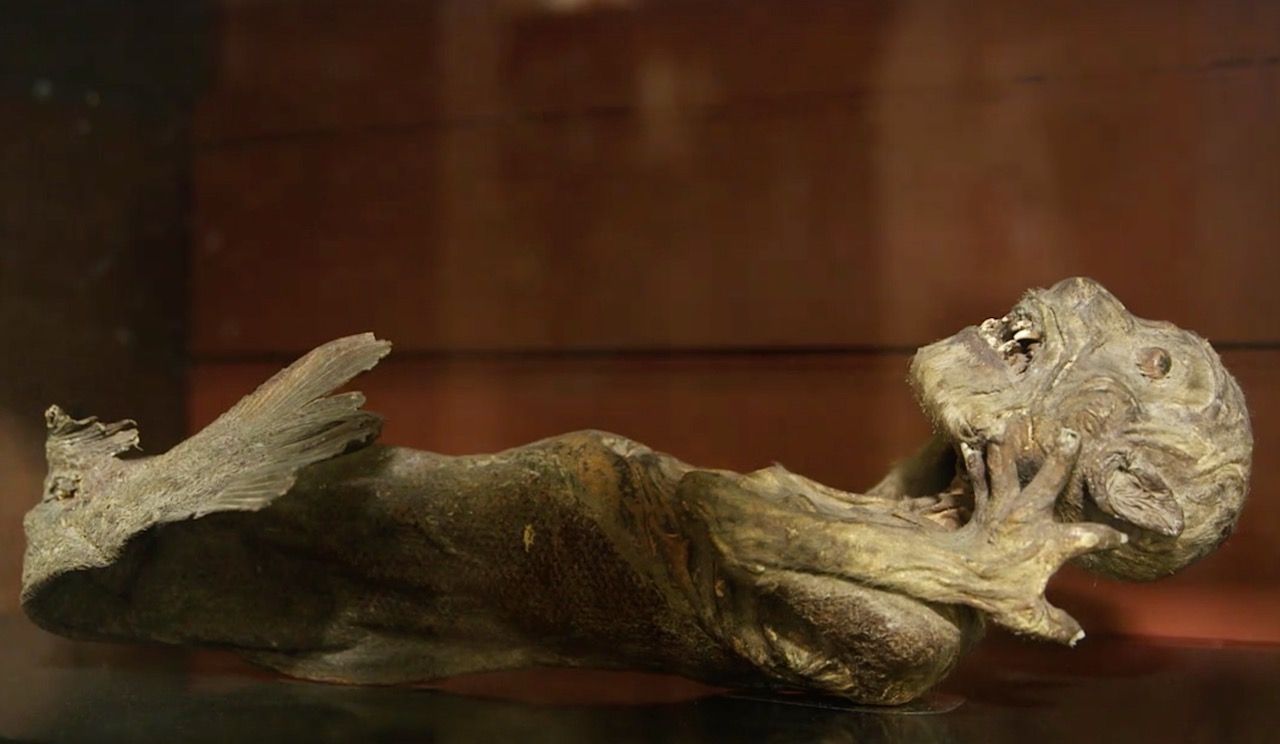
Although it looks like something that belongs to a cabinet of curiosity, this spooky-looking creature that looks very much like a mermaid is a piece of trickery. Said to have been caught in Japan in the 18th century and gifted to Prince Arthur of Connaught as the real deal, the mermaid is nothing more than a creepy piece of taxidermy of a monkey’s upper body and a fish’s tail. Still, it’s worth a stop since its display in Europe in the early 19th century likely convinced a lot of people that mythical creatures like mermaids in fact existed in faraway lands like Asia.
Where to find it: In room one in the Enlightenment department, right off the Great Court (on your left if you enter via Montague Place, on your right if you enter from Great Russell Street).
2. Map of Venice
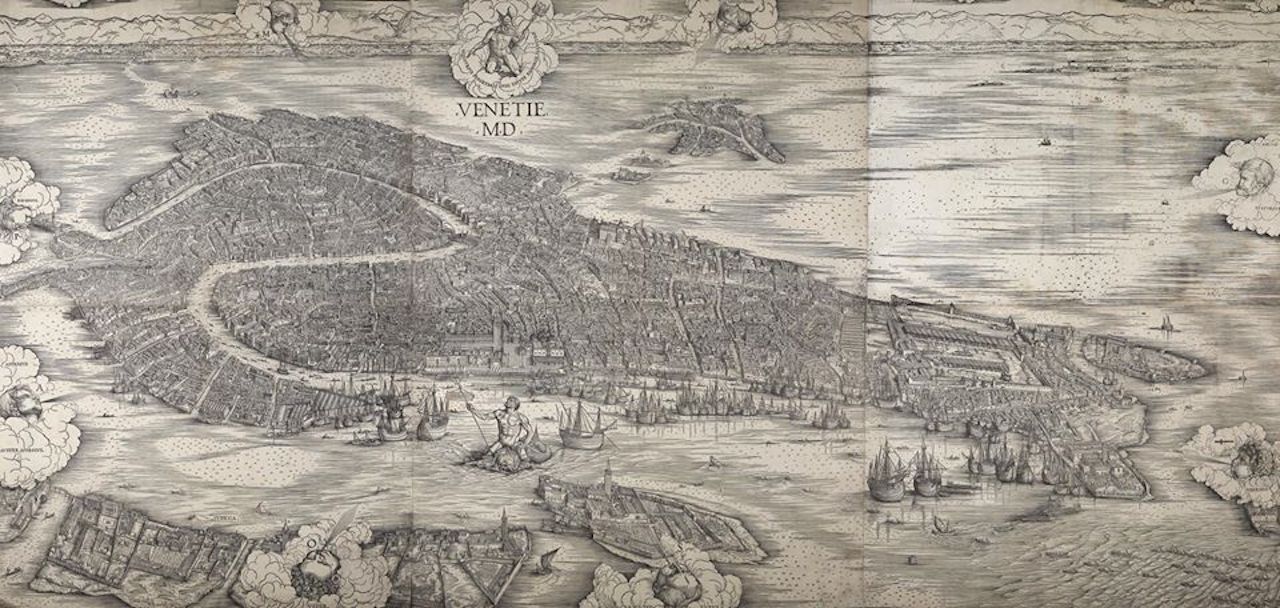
Map lovers will have a field day with this detailed print of Venice. Nine-feet wide and three-feet high, this bird’s-eye view of the city was made well before drones existed — in 1500. According to Michael, “every roof, spire, street, and canal is mapped out in extraordinary detail. It’s as if the artist has memorized every detail from every street and building in the entire city.” There is a bench located right in front of the piece for visitors to take their time to scrutinize the map and admire the talent of the artist who created it, Jacopo de’ Barbari.
Where to find it: In room 90a, on level four, an area of the museum often neglected by visitors.
3. Ravi Shankar’s sitar
Because the world of music is so much more than guitars, pianos, and the oh-so-ubiquitous recorders, go check out the intricately decorated sitar that once belonged to world-renowned musician Ravi Shankar displayed at the British Museum since 2017. Michael reminds us, “Shankar was famous for teaching George Harrison to play the sitar and helping to introduce an Indian flavor to the Beatles music,” so whether you are a huge Beatles fan, a music fan, or just a lover of beautiful things, this large stringed instrument is an underestimated must-see.
Made of teak and two gourds, it is beautifully adorned with stained and inlaid bones and botanical carvings. The instrument was gifted to the museum by Ravi Shankar’s widow. To know what it sounds like, click the video above and watch Ravi Shankar’s daughter Anoushka Shankar, herself a musician, play it beautifully.
We said it for the Louvre , and we’ll say it again for the British Museum: Every single piece displayed is worth your attention as it is the result of extraordinary talent and historical significance. That said, visitors who are not experts in art history or rarely frequent museums may find themselves fatigued by certain sections.
For Michael, if you don’t have a clue what the difference is between Doric and Ionic, and don’t feel like practicing your Latin and Ancient Greek, it’s room 77 (“Greek and Roman architecture”) and room 78 (“Classical inscriptions”), both located in the basement, that you should skip. It’s a niche section of the museum that those uninterested in the topic can skip without guilt.
What you did not know
More like this
Matador guide, trending now, the 7 best london martini bars, curated by a professional gin maker, discover matador, adventure travel, train travel, national parks, beaches and islands, ski and snow.
We use cookies for analytics tracking and advertising from our partners.
For more information read our privacy policy .
Matador's Newsletter
Subscribe for exclusive city guides, travel videos, trip giveaways and more!
You've been signed up!
Follow us on social media.

Check rates for our recommended hotels
- Book Hotels
Subscribe to our weekly newsletter
Subscribe and get our free guide to "101 Ways to Save in Europe"
* indicates a required field
Your subscription request has been received
Sorry, an error occurred and your subscription request could not be processed. Please try again later.
- See All Cities
- Advertising Info
- Customer Support
London: 7 tips for surviving the British Museum
Feb 2, 2019
Frances Ambler

The British Museum is probably one of the sights you shouldn’t miss when you’re in London .
There’s a reason why it’s the most visited tourist attraction in the UK: it has an amazing collection of artifacts, dating back thousands of years and drawn from all over the world. Plus, it probably doesn’t hurt that the price is right (always free admission).
Related: 20 Free museums in London that we love
But with nearly 7 million visitors attending the museum each year, it can get a bit hectic in there. Here are seven ways to get the most out of your visit to the British Museum.
Tips for visiting the British Museum
1. try to avoid peak times.
Okay, let’s be realistic here — the British Museum is never going to be the quietest spot in London, but you can visit when it’s a little quieter. Aim to arrive for the 10 a.m. opening, or come later on a Friday when the museum closes at 5:30 p.m. Check out what special temporary exhibitions are on — if it is a really a popular show, the museum gets especially full when they’re in their opening or closing weeks.
And don’t be tempted to save your trip for a rainy day — the museum is at its busiest when it’s bad weather outside. Instead, tackle it on a sunnier day: The sun shining through the glass roof of the Great Court means the museum is at its most handsome, as well as quietest.
Related: Affordable hotels near the British Museum

The Parthenon Sculptures are one of the biggest attractions at the British Museum. Photo: Bram S
2. Tackle the biggies first
You’re first through the door at 10 a.m., and your aim is to get to the big sights before everyone else does. First up, the Rosetta Stone, the discovery that provided the breakthrough in understanding Egyptian hieroglyphics — it’s in room 4, the Egyptian Sculpture gallery on the ground floor, which is straight off the Great Court.
Head onwards through the galleries to get to room 18 where the Parthenon Sculptures are displayed. Also known as the Elgin Marbles, these were originally part of the Parthenon in Athens and were removed and taken to Britain in the early 19th century. The debate continues whether these should be kept in the British Museum or returned to Greece. Decide for yourself before heading upstairs to room 70 to get a taste of Rome and the Portland Vase, the cameo glass vase that has inspired generations of makers, poets, and scholars.
If you are feeling brave and you’re still ahead of the crowds, rooms 62-63 displays some of the Ancient Egypt collection, most famously the mummies. Finally, it’s back downstairs to room 24, the “Living and Dying” gallery which includes Hoa Hakananai’a, an imposing Easter Island statue. Then make your way back out to the Great Court and treat yourself to a cup of tea and a slice of cake from the café — you deserve it.
3. Prepare in advance
That brief tour only skims the huge amount the British Museum has to offer. There’s a great podcast that uses a hundred of the museum’s objects to tell the history of the world. Listen ahead of your visit to be inspired.
Although entry to the museum and the permanent exhibits is completely free, there are charges for special exhibitions. Save yourself time by booking tickets for these online : You’ll be given a timed ticket so you don’t have to waste time waiting in line once you’re inside the museum.
4. Don’t neglect the lesser-known galleries
The British Museum has beautiful and fascinating objects all over the world, so it’s rewarding to spend time in some of the less famous galleries. After the crowds that fill the Egyptian Galleries, the Japanese Galleries offer a more serene atmosphere in which to appreciate the beauty of their objects. And, while the British Museum isn’t as well known for its fine art as other London galleries, the Prints and Drawings galleries always shows wonderful examples by undisputed masters of the medium.

The massive central hall of the British Museum with a giant glass roof. Photo: Spiros K
5. Take your time
Because entry to the British Museum is free to enter, don’t feel the pressure to do it all in one go. You could spread your visit over a series of mornings, or pop outside to get some fresh air and a change of scenery if the crowds and all the culture are becoming slightly overwhelming. There are plenty of fantastic (and affordable) places nearby to grab some food or a drink.
Related: Guide to eating and drinking near the British Museum in Bloomsbury
6. Or see it all in 90 minutes
If you are pressed for time, the British Museum runs a fantastic introductory tour to their collections called ‘Around the World in 90 Minutes’, which takes place on Fridays, Saturdays, and Sundays. It does exactly what it says it will, taking in the Rosetta Stone and Parthenon Sculptures, as well as lesser known marvels along the way and taking up just an hour and a half of your valuable time. Tickets cost £14 and you can book in advance through the museum website .
7. Consider becoming a member
If you are a serious culture vulture and are going to be around in London for longer than a short break, it’s probably worthwhile becoming a museum member. It costs £64 for a year’s membership (£44 if you are under 26 years old). Perks include a dedicated cloakroom, so no waiting to deposit bags or umbrellas, free unlimited entry to all special exhibitions, as well as special evenings and events. Find out more here .
The British Museum
Great Russell St, London WC1B 3DG Daily 10 AM to 5:30 Pm (8:30 PM on Fridays) Website Tube: Tottenham Court Road, Holborn, Russell Square or Goodge Street
Search Hotels in London
About the author.

Frances Ambler has been doing her best to live in London on the cheap since 2003. She works as an editor in one of London’s best – and free – museums, as well as writing for various websites including domesticsluttery.com . An avid second-hand shopper, ten years of "research" culminated in her most recent project: writing for the soon-to-be-published "Rough Guide to Vintage London."
Related Posts
- Athens: Visit the new Acropolis Museum for €1
- London: 20 free museums in London
- 8 travel myths about London to stop believing
- 10 reasons to visit London in 2015
Leave a Reply Cancel reply
Your email address will not be published. Required fields are marked *
Notify me of follow-up comments by email.
Notify me of new posts by email.
One thought on “London: 7 tips for surviving the British Museum”
Great advice. My top tip is DEFINITELY avoid during rush hour and also see what else is in the area. We found the Grant Museum of Zoology and the Petrie Museum of Egyptian Archaeology just a few minutes walk away! Both were empty and a great way to spend some time.
http://www.childrenarewelcome.co.uk/Off-the-beaten_track_museums_in_London_-_by_Andy
Book Your Trip
Search our blog:, destinations.
- Aix-en-Provence
- – Free Paris
- – Paris Eating and Drinking
- – Paris Hotels
- – Paris Nightlife
- – Paris Outdoors
- – Paris Performance and Events
- – Paris Planning
- – Paris Shopping
- – Paris Sights
- – Paris Transportation
- Northern Ireland
- – Florence Eating and Drinking
- – Florence Practical Info
- – Florence Sightseeing
- – Rome Eating and Drinking
- – Rome Hotels
- – Rome Practical Info
- – Rome Sights
- – Venice Eating and Drinking
- – Venice Hotels
- – Venice Practical Info
- – Amsterdam Sights
- – Barcelona eating
- – Barcelona hotel advice
- – Barcelona planning
- – Barcelona sightseeing
- – London eating
- – London hotel advice
- – London neighborhoods
- – London sightseeing
- – London transportation
- – Brooklyn
- – New York hotel advice
- – New York neighborhoods
- – New York planning
- – New York sightseeing
Read more about: Sightseeing in London

Find us on Facebook
About eurocheapo.
Since 2001, our mission has been to make your time in Europe affordable and memorable. The world is out there, and it’s less expensive than you think.
© 2024 by Over There Interactive, Inc. All Rights Reserved. Privacy Policy
EuroCheapo Cities
The British Museum: A London Visitors’ Guide
[Updated August 2021]
The British Museum in London is one of the most popular attractions in the United Kingdom. Millions of people visit each year, and it’s full of interesting exhibits that cover everything from ancient to modern history .
If you’re thinking of going to the British Museum while you’re in London, here’s what you need to know to get the most from your visit.
Table of Contents
Purpose Of The British Museum
Since it was first founded, the British Museum’s main goal has been to provide the public with access to exhibits that span over two million years. It also aims to provide a place where people from different cultures can learn from each other.
The museum hosts many classes on world history for both children and adults, designed to provide an interesting and educational experience for visitors of all ages.
The British Parliament established the British Museum in 1753 and it opened to the public in 1759. At first, it focused on the scientist Sir Hans Sloane’s 71,000 object collection. This included books, natural specimens, and antiquities like coins and medals.
In the nineteenth century, the museum continued to expand and grow. It gained its most famous acquisition, the Rosetta Stone, in 1802. Around that time, the Parthenon sculptures were also added to the collection.
Soon, the number of artefacts grew too big for the small space, and the museum began to expand. In 1823, the quadrangle building was constructed – it still houses the museum today.
The Reading Room was built in 1857 as the museum started to focus increasingly on education. More public lectures were provided and the displays improved.
Twentieth Century
In the twentieth century, the British Museum expanded its public services, adding new guide lecturers and more educational services. A beautiful new court was built: the Queen Elizabeth II Great Court.
This two-acre court is the largest covered public space in Europe. Still in use today, it houses an information desk, a reading room, and an educational centre.
Today, the British Museum continues to add new acquisitions to its collection. The museum’s visitor numbers have grown exponentially since it was founded. When the museum first opened in the eighteenth century, it averaged 5,000 visitors a year. Now, the number is over six million.
With the exception of World War II, the British Museum has remained open ever since it was first founded.
Top Exhibits and Galleries
The British Museum is huge and features tons of fascinating exhibits and galleries. When you get to the museum, spend a few minutes studying a map of the museum to give you an idea of where everything is located.
Start your visit by viewing the famous Rosetta Stone. This iconic exhibit is located in Room 4 in the Egyptian gallery, which is right near the entrance of the museum. While you’re there, be sure to check out the Mummy of Katabet, a mummy with an elaborate headdress and real rings.
You also won’t want to miss the Ancient Greece and Rome Galleries. These galleries are on the ground floor, and they contain ancient sculptures, vases, exhibits on Alexander the Great, and more.
The most famous sculptures in this gallery are the stunning Elgin marble Parthenon sculptures. You’ll find these sculptures in Room 18.
If you’re interested in European history, head to the British Museum’s European galleries. There, you’ll see objects dating back to Medieval Europe.
One of the most famous exhibits in this part of the museum is the Lewis Chessman set. These 82 chess pieces date back to the twelfth century, and they’re made out of walrus ivory and whale tooth.
The European rooms also feature antique clocks and watches, Italian Renaissance-inspired vases, and twentieth century Art Nouveau pieces.
You can also learn more about Middle Eastern history in the Middle Eastern galleries. These galleries include pieces from Ancient Iran, Ancient South Arabia, and Mesopotamia.
Some of the highlights of these galleries are a crushed helmet and ancient royal board game from Ur, and a well-preserved Assyrian sculpture relief depicting lion hunting.
These are just a few of the many exhibits and galleries in the British Museum. Some of the other highlights include the largest collection of Chinese ceramics outside China in Room 95, Mayan and Aztec items in Room 27, and ancient objects from the Korean peninsula in Room 67.
Location and Visiting Details
The British Museum is free to enter, and it’s open from 10:00am to 5:30pm. On Fridays, the museum stays open until 8:30pm. The information desk in the Great Court opens an hour before the museum at 9:00am.
The museum gets very crowded, especially during the peak tourist season of April to October. To avoid the crowds, try to arrive at the museum right when it opens at 10:00am. This way, you’ll get some time alone in the galleries before the crowds arrive.
The British Museum also hosts tours in different galleries throughout the day. These tours last about thirty to forty minutes, and they’ll give you an in-depth look at some of the museum’s fascinating galleries.
The museum also hosts free lunchtime gallery talks and Friday evening spotlight tours. You can find all of the tour times here .
How To Get To The British Museum
The museum is located on Great Russell Street in the Bloomsbury district of London. It’s very easy to get there on the London Underground. Simply take the Central or Northern line to Tottenham Court Road.
From there, it’s just a five minute walk. There are also many buses that stop near the British Museum. Check out the full list of transportation options here .
The British Museum is a highlight of any trip to London. No matter what part of history you’re interested in, you’re sure to find exhibits that you’ll love in the museum.
When you’re putting together your London itinerary, be sure to schedule a day there.
Remember To Check Out Our Most Popular Posts:
The Cotswolds: The 20 Best Places To Visit
English Villages | What Makes The Perfect Village In England (With Examples)
Visit Yorkshire, England: York, The Dales & More
English Cathedrals: The 20 Best Cathedrals In England
The Best 20 Castles To Visit In England
London Travel: The Ultimate Guide. Tips, Attraction Reviews & More
The Kings And Queens of England: From William the Conqueror To Charles III
British Insults, Slang & Phrases: The Ultimate Guide
10 Fun Facts About England: Weird English Traditions
The Yorkshire Dales | The Best Places To Visit
Gorgeous Images Of The English Countryside
Visit Somerset, England: Cider, Bath, Glastonbury & More
20 Gorgeous English Thatched Cottages
Take our London Quiz: How Well Do You Really Know London?
Click Here For More On London > London Travel
Terms and Conditions - Privacy Policy
🙌 Awesome, you're subscribed!
Thanks for subscribing! Look out for your first newsletter in your inbox soon!
Get us in your inbox
Sign up to our newsletter for the latest and greatest from your city and beyond
By entering your email address you agree to our Terms of Use and Privacy Policy and consent to receive emails from Time Out about news, events, offers and partner promotions.
Awesome, you're subscribed!
The best of London for free.
Sign up for our email to enjoy London without spending a thing (as well as some options when you’re feeling flush).
Déjà vu! We already have this email. Try another?
- Things to Do
- Food & Drink
- Attractions
- Feeling Spontaneous?
- Los Angeles
When to visit London's busiest museums
Life moves fast and there are better things to be doing in London than queueing – having fun, for example. We've used Google's 'popular times' feature to scientifically bring you the best times to visit London's top ten museums, so you can skip the crowds.
British Museum
Visit one of the world's oldest museums and get your fix of human history and culture at the British Museum , whilst carefully avoiding the rest of the present-day humans. The collection is vast and only a fraction is on public display at one time and, as you might expect, a crowded weekend queue is not the ideal way to take in the treasures on display. Travel from AD 300 through to the eighteenth century Enlightenment at your own pace. Find peace and quiet on Thursdays at 10am or 4pm, though a lunchtime should still prove to be pretty zen.
Check out ' Celts: Art and Identity ' to see why the tribes of the Iron Age were united by a love of beautiful art objects (running until Sunday January 31 2016).
Tate Modern
On Fridays the Tate Modern stays open late into the night. Whilst the gallery is flooded with visitors at the weekend, a Friday visit will secure you some of the sacred silence as visitors tend to trickle out from 7pm onwards.
Check out ' The World Goes Pop ', (running until Sunday Jan 24 2016).
National Gallery
While the National Gallery opened in 1824 with just 36 paintings, today's collection of over 2,000 masterpieces now take substantially longer to enjoy. You can't see everything in one visit to the gallery, but without queues of visitors your odds are definitely improved. Time your visit right and you could be enjoying a free guided tour and audio guide – or a trip to the wonderfully atmospheric café that looks on to Nelson's Column – in blissful peace. A Tuesday's the best day for a visit, when you can find yourself fairly uninterrupted before midday.
Check out London's best paintings in the National Gallery , then explore one of the most psychologically revealing painters of all time in ' Goya: Discover the portraits ', (running until Wednesday October 7 2016).
Victoria and Albert Museum
The V&A is one of the world’s – let alone London's – most magnificent museums. It's certainly calmer than its tearaway cousins on the other side of Exhibition Road, too. Time your visit for a Saturday morning to take in 150 grand galleries on seven floors contain countless pieces of furniture, ceramics, sculpture, paintings, posters, jewellery, metalwork, glass, textiles and dress, spanning several centuries – before the crowds really arrive at 2pm.
There's a lot to see. Explore transformative power of extreme footwear in 'Shoes: Pleasure and Pain' (running until Sunday January 31 2016), get close up with ' Undressed: a brief history of underwear ' (running until Sunday February 5 2017) to explore how body ideals have changed over time, or take a fresh look at exhibits in an LGBTQ tour (running until Saturday November 28 2015).
Science Museum
The Science Museum showcases developments in contemporary science, medicine and technology but very importantly it's also got a flight simulator. Thursday is the best day to visit or be speedy on a Sunday morning and have a go on everything before the mayhem begins at midday:
Catch our favourite exhibition of 2015 and learn more about the space race in Cosmonauts: Birth of the Space Age (running until Sunday March 13 2016), take your own trip through space (running until Sunday May 22 2016) or discover how food controls us (running until Friday January 1 2016).
National Portrait Gallery
Portraits don't have to be stuffy and they don't have to be seen through a sea of screens and tops of peoples' heads, either. Visit the National Portrait Gallery on a Tuesday to see everything from oil paintings of stiff-backed royals to photos of sports stars and gloriously unflattering political caricatures, undisturbed.
Catch Audrey Hepburn: Portraits of an Icon (running until Sunday October 18 2015) and celebrate 100 years of the fashion bible British Vogue in A Century of Style (running until Sunday May 22 2016).
Tate Britain
Tate Britain is perhaps second only to the National Gallery when it comes to British art. Luckily, this gallery is usually peaceful. Visit on a Thursday or a late Sunday afternoon.
Explore Britain’s relationship with gin and drinking in Art and Alcohol , a show curated by David Blayney Brown who curated last year’s phenomenal Late Turner show (Friday September 30 2016). And you won't fail to miss the long rainbow-coloured silk nets hanging from ceiling to floor in Christina Mackie's Commission 2015 (running until Sunday October 18 2015).
Saatchi Gallery
Charles Saatchi gained fame in the 1990s as a promoter of the Young British Artists – Damien Hirst, Tracey Emin, Gavin Turk, and Sarah Lucas among them. Today the gallery continues its mission to provide a platform for unknown, young, contemporary artists both homegrown and international. Luckily, it's quiet during the week. Visit on a Monday, Tuesday, Thursday or Friday at any time between 10am and 1pm, and you'll feel like you've got the place to yourself.
Celebrate the Saatchi Gallery's thirtieth birthday with its first exhibition of all-female artists in Champagne Life (running until Sunday March 6 2016) or indulge in exhibitionism with The Rolling Stones (running until Sunday September 4 2016).
Royal Academy of Arts
While the Royal Academy's biggest event is the Summer Exhibition, you're guaranteed to see stunning work throughout the year whether it's a blockbuster show or drawn from the RA's holdings – with the likes of Constable and Hockney on display. Interesting fact: the nozzles of the courtyard fountain are laid out to match the position of the stars and planets on the night in 1723 when Sir Joshua Reynolds, artist and RA Founding President, was born. Visit on a Monday morning or afternoon and you'll get the distinct impression that the rest of the world hasn't woken up yet, leaving you to explore in peace.
If you see one thing make it the new Ai Weiwei retrospective. His first British survey show is unmissable (running until Sunday December 13 2015).
Check out the top ten art exhibitions in London or 100 best paintings in London
Been there, done that? Think again, my friend.
Popular on Time Out
Discover Time Out original video
- Press office
- Investor relations
- Work for Time Out
- Editorial guidelines
- Privacy notice
- Do not sell my information
- Cookie policy
- Accessibility statement
- Terms of use
- Modern slavery statement
- Manage cookies
- Claim your listing
- Time Out Offers FAQ
- Advertising
- Time Out Market
Time Out products
- Time Out Offers
- Time Out Worldwide

British Museum London
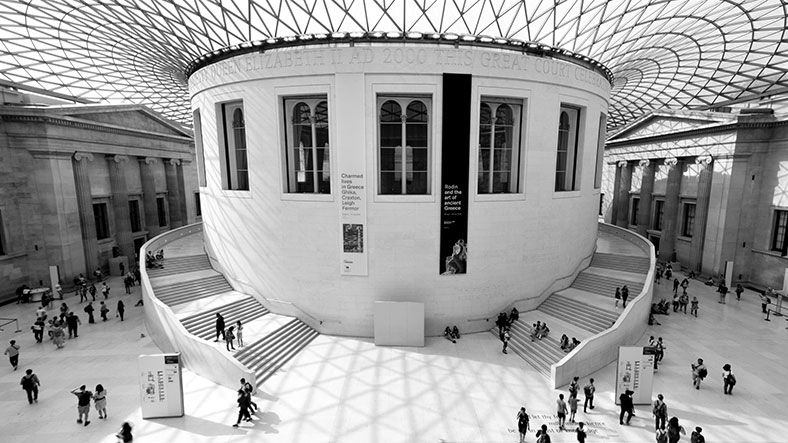
The British Museum in London is possibly one of the most famous museums in existence. It is the oldest in the world. It has the most extensive collection of antiquities in Europe.
Over the last few years, the British Museum has received an average of more than 5 million visitors each year (5.8 million last year), making it the third most visited museum in the world. It is only surpassed by the Louvre in Paris and the Metropolitan Museum in New York.
Visiting the British Museum in London
Below you will find a table with the most important information about opening hours, prices and how to get to the British Museum in London. Below you will find all the detailed information.
What to see at the British Museum
The best things to see at the British Museum. That’s the key question, and we will give you some ideas in this article.
The British Museum covers a considerable area, its central building and four wings, designed by the British architect Sir Robert Smirke (1780-1867), cover an area of 92,000 square metres and house around 8 million objects inside, but don’t worry, only 1% of them (around 80,000) are on view to the general public.
Before entering, take a good look at the building itself, as it will tell you a lot about what you will find inside and the great influence of Ancient Greece in every corner of the museum. The reason? The columns you’ll see on the main façade. There are 44 columns exactly 14 metres high, and they are inspired by the temples of Athena Polias in Priene.

As soon as you enter, if you look up at the roof you can see the main roof, called “The Queen Elizabeth II Great Court”, designed by Norman Foster, built in steel and glass, which transformed the museum by converting the central courtyard into the largest covered square in Europe. The small circular building in the centre of the roof is known as “The Reading Room”.
Lower Floor of the British Museum
This is the lowest floor you can visit in the British Museum, and from here, you can access levels -1 and -2.
It is one of the smallest and quickest floors to visit. It has objects from Africa, Ancient Greece and Rome (Room 77 is dedicated to architecture and Room 78 is dedicated to classical inscriptions). This is where you will find The Sainsbury Galleries, dedicated to Africa (Room 25).
Ground Floor of the British Museum
This is the floor where the main entrance to the museum is located. On arrival, you will see a security checkpoint where they will check all bags, child seats etc.
From here, you can access all levels of the building, and this is where the cafeteria (Court Café), souvenir shop, etc. are located. There is also a cloakroom where you can leave your coat, backpack, etc., in case you don’t want to carry it with you during your visit.
Here is what I consider to be the most important room in the British Museum, room number 4, which is where you can see the Rosetta Stone, which has helped decipher important and complex Egyptian hieroglyphs.
In terms of exhibitions, the main floor of the British Museum, on its different levels, houses rooms dedicated mostly to Ancient Greece and Rome (about 15 rooms) and also to the Middle East and Egypt (5 rooms in total).
Our recommendation, if you are not going to see all the rooms, is not to miss the statue of Easter Island, Hoa Hakananai’a, which is one of the most impressive and one of the ones you will have seen most in art books.
There is also a large collection of sculptures from the Parthenon in Greece. (We will leave the controversy of whether they were stolen or not aside…).
Floors 3, 4 and 5 or “Upper floors” of the British Museum
These are the floors of the British Museum where there are more rooms to visit and where you will probably spend more time if you try to see the whole museum.
On the 3rd floor, almost 20 rooms focus on Ancient Egypt, Europe, Ancient Greece, Rome and the Middle East. I think on this floor are some of the best things to see at the British Museum. One of those things is the Oxus Treasure in room 52. It is a metal treasure that came from Ancient Iran.
The most interesting part of the Ancient Egypt section is in rooms 61, 62 and 63, where they talk about death and what is after death according to Egyptian culture. Here you can see real mummies.
Other important objects on floor 3 include “The Lewis Chessmen” in room 40, which is nothing less than the world’s most famous chess board and pieces.
Audio Guides, Guided Tours and Mobile Apps at the British Museum
Audioguides : If you like to go at your own pace or have time to visit the British Museum at your own pace, then we recommend using an audioguide (you can pick them up when you enter the museum reception) as they are available in several languages including English.
Free Guided Tours of the British Museum : These last about 30-45 minutes, are given by museum volunteers and run every 15 minutes from 11.00 am to 3.45 pm daily. – If you are visiting the British Museum from Thursday to Saturday, at 1.15 pm they do a 30-40 minute talk starting at 1.15 pm, a good opportunity to practise your English for free! Hehe.
Other guided tours: Something exciting, especially if you are going to visit the museum with children or if you are one of those who like to touch things… is to go on one of the tours where you can touch some of the works and objects exhibited to the public. They are every day from 11.00 am to 4.00 pm.
Visiting the British Museum with children
The British Museum is an interesting place to visit with children at least 7 or 8 years old (this is my opinion based on what we have seen ourselves).
There are many rooms where you can explain very interesting things about the different civilizations (maybe you can leave the mummy room aside, depending on how sensitive your children are…). In all the rooms, there is information with images, drawings, etc., geared towards children’s learning.
Tip for visiting the British Museum with children : When you arrive, go to the information desk and ask about the family tour and what activities are available that day as they always have something organised for children.
Think that it’s a big space, lots of adults running around… it’s very easy for a small child to get bored, so a stop to draw pictures or decipher Egyptian hieroglyphics… might be a good idea.
Children’s menus are in the museum’s cafe and restaurants if you want to stop for a quick bite. The best café is the one on floor 0, the one that connects to the street.
If you go with a baby and want to breastfeed, you can do it anywhere in the museum, but there is also a specific room with very comfortable armchairs where mothers can breastfeed and rest more peacefully.
If you are visiting London as a family, you may be interested in all our articles about visiting London with children.
Where to eat at the British Museum
There are several cafes and restaurants inside the museum, and the variety of menus is good. Still, to tell you the truth, considering the area you are in, Bloomsbury, it is very easy to find restaurants and pubs to eat in the streets surrounding the museum.
If you want to eat something inside the British Museum, the options are:
- Court Café: Paninis, hot sandwiches and other similar things like salads and vegetable soups.
- Great Court Restaurant: Something more formal if you want a more varied menu and you’ve been eating sandwiches for a few days. You can eat for about 12 pounds per person with a drink.
- Pizzeria: Similar to the Court Café but only pizzas. They are not the best pizzas you can find in the area, but they are an option.
- Montague Café: Yes, a coffee shop. Ideal for a quick coffee at the end of your visit.

Origins and History of the British Museum
The British Museum opened its doors to the public in January 1759 but was founded a few years earlier, in 1753. Initially, the British Museum was housed in Montague House, a 17th-century mansion in London’s Bloomsbury district on Great Russell Street.
Today the British Museum building stands on the site of the original Montague House, which became the nucleus of the Museum.
One of the reasons the British Museum was created was the desire of a well-known collector, Hans Sloane, to be able to store and display somewhere the thousands of pieces of art he owned so that he could share them with society even after his death.
In the early years, the British Museum was characterised by the presence of works and collections from Greece, Rome and Egypt. It was in 1801 that one of the most important guests in the history of mankind, the Rosetta Stone, arrived in the museum’s galleries. The Rosetta Stone, which has been used to decipher the meaning of complex Egyptian hieroglyphs (located in Room 4 on level 0 of the museum), has been used to decipher the meaning of complex Egyptian hieroglyphs.
The museum as we know it today was not built until 1852. A large number of relics, objects and works of art that kept arriving during the early years made it necessary for the main building to grow to such an extent that in 1887, the entire Natural History collection was moved to the building we know today as the Natural History Museum of London, in the Kensington district.
The decision was also taken to move the whole of the British Library to a separate and independent site, 96 Euston Road, where “The British Library” is today.
Related Posts
Changing of the guard in london: dates 2024, london pass itineraries, the best black taxi tours in london, best musicals in london in 2024.
Save my name, email, and website in this browser for the next time I comment.
Notify me via e-mail if anyone answers my comment.
Type above and press Enter to search. Press Esc to cancel.
The Ultimate Guide to visiting the British Museum in 2024
British museum ultimate guide.
Visiting museums and taking free tours are two of the must-do experiences in London available for every budget! But if you only have time to visit one museum in London, then make it the British Museum. Not only is it one of the oldest museums in the world, it’s also one of the largest museums in England, and attracts more than 6 million visitors each year.
The museum was officially opened to the public on January 15th, 1759 (although it was first housed in the 17th century Montagu House before moving to its present location in Bloomsbury). The museum was founded thanks to the personal collections of Sir Hans Sloane (a famous physician, naturalist and collector), who collected more than 71,000 different objects during his lifetime.
Originally, the British Museum’s collection consisted of manuscripts, books, ethnographic material and various natural specimens and antiques (like coins, medals, prints and drawings); but over time, the museum expanded and today, it contains more than seven million objects which cover over two million years of history and culture.
Its departmental library has been around since 1860 and consists of 24,000 different items (with the oldest item dating all the way back to 1636); and its Assyrian collections even helped researchers decipher the Cuneiform script (an ancient script from the Middle East).
British Museum Highlights
The museum is separated into different galleries which are organized by periods of time in history or specific locations or countries in the world (such as Roman Britain, Ancient Iran and Greece, just to name a few).
Some of the many must-see items that shouldn’t be missed by any first-time visitor to the British Museum include:
- The Rosetta Stone (an item which helped decipher various Egyptian hieroglyphics after they were discovered in 1799)
- The Parthenon Sculptures (taken from the Parthenon in Athens)
- Egyptian mummies and coffins (which are said to be one of the most comprehensive collections of Egyptian antiquities in the world)
- The Anglo-Saxon Sutton Hoo ship burial relics (which date back to the 6th and early 7th centuries, and are considered to be some of the most important discoveries in British archaeology)
- A human-headed winged bull monument (which was taken from a gateway in the citadel wall at Khorsabad)
- Lindow Man (the preserved body of a man from the Iron Age or Romano-British period which was discovered in a bog near Cheshire in 1984)
- The Lewis chessmen (a group of 12th century chess pieces which were made from walrus ivory)
- Figures from The Mausoleum at Halicarnassus and the Temple of Artemis in Ephesus
Special Tips
Getting There
Visiting the british museum.
Recommended visiting time is at least three to four hours, but if you’re interested in joining some of the many different talks and tours at the museum, then be prepared to spend the entire day wandering around. However, if you’re short on time, you can pick up an audio guide at the Audio Guide Desk in the Great Court, and go on your own self-guided tour within two hours.
If you’re visiting with children, you can take part in the “Museum explorer trails” exhibition, which leads families on a “journey of discovery” to find some of the many treasures scattered all throughout the museum (The activity takes around 30 to 40 minutes to complete).
Photography with flash and video recording is allowed in the majority of the galleries, but must be for private purposes only.
There is a main cloakroom located to the west of the main entrance, where you can leave some of your personal belongings so you don’t have to carry them around with you during your visit. Items over a certain weight and size will not be allowed into the museum, and will have to be kept at the luggage facilities at major rail stations like King’s Cross, Charing Cross and Euston.
There are toilet facilities on every floor of the museum, as well as in The Gallery Cafe and Court Cafes on the ground floor, and The Court Restaurant on the upper floor.
For those with mobility issues, there are benches and stools located in the Great Court, and there is some seating available in selected galleries as well.
Ticket prices and Opening hours
The British Museum is free to enter, and is open from 10:00 a.m. to 5:00 p.m. every day (but closes at 8:30 p.m. on Fridays).
If you’re interested in touching or holding some of the artefacts in the museum, there are object handling sessions which take place at the Hands-On Desks between 11:00 a.m. and 4:00 p.m.
There are a variety of 30 to 40-minute tours which take place throughout the day, and meet at the relevant gallery. The tours range in topic from Ancient Greece, South Asia and the Art of the Middle East, and usually take place between 11:00 a.m. and 4:00 p.m. For more information, be sure to check out the British Museum’s official website before you visit, as the dates, subjects and times fluctuate throughout the year.
There are also different spotlight tours and lunchtime gallery talks with guest speakers which take place throughout the week, and tend to focus on specific themes such as The Rosetta Stone or The Enlightenment. For more information or to get more details about any tour or talk, check the official website before you visit.
If you want to go on a self-guided tour, there is a multilingual audio app you can download from Google Play Store or the Apple App Store. It costs £4.99 per language or between £1.99 and £2.99 for themed tours.
If you want to take part in the Museum explorer trails, you can collect your free trail guide from the Families Desk in the Great Court, but only on the weekends or any day during Camden school holidays between 10:30 a.m. and 4:30 p.m.
If you are visiting the British Museum, you might want to check out the list of free tours in London that run daily.
Free Tours in Your Language

Discover 8 Million Works of Art & History With These British Museum Tours in London
Things to do in London London Attractions Museums in London British Museum London Tours
It is commonly said that when you are in London, you are never too far away from a museum. With over 150 museums, galleries and exhibitions spread across the city, one can see why this statement holds true. London has a museum for literally everything - a science museum, a war museum, a natural history museum, a museum dedicated to The Beatles, a zoology museum, even a Freud museum! Looking at this vast list, it is safe to say that Londoners love their museums and all the history and traditions associated with it. However, out of this list, there is one museum in particular - the British Museum, which overshadows and outshines all the rest.
Here's a detailed guide to the British Museum in London, tickets to the best British Museum Tours, the must see exhibits at British Museum, the British Museum restaurants and a few insider tips that will help you plan your British Museum visit effortlessly.
British Museum In London
The British Museum in London is one of England’s largest, oldest and most comprehensive museums, with its permanent collections housing over 8 million works and articles. Through its exhibits and collections, this museum takes you back to the birth of mankind and civilization. The British Museum is dedicated to documenting and showcasing the evolution and culture of humankind, with exhibits from all over the world.
If you find yourself in London, visiting this museum should definitely be on the top of your list (after the London Eye, of course).
British Museum History and Architecture
British museum history.
The British Museum in London is the world’s first national public museum, established in the year 1753. The exhibits and items on display at the museum are largely based on the collections of Sir Hans Sloane , an Irish physician and scientist. Although the museum didn’t start out with much (71,000 objects), over the course of the last two and half centuries, it has undergone several changes, including widespread renovations and expansions, in order to accommodate the ever-growing collection.
Today, the British Museum, London is home to one of the most extensive and comprehensive collections of artefacts, sculptures, paintings, statues, manuscripts and other antiquities, all collected from around the globe and all dedicated to showcasing the leaps and bounds of human history.
British Museum Architecture
The British Museum was designed in the Greek Revival style, emulating the classical Greek architecture, with columns, a decorative pediment at the south entrance and a main quadrangle and 4 wings. The core of the building was designed by Sir Robert Smirke , at the time an eminent and established neoclassical architect. Smirke began the project with the construction of the east wing meant for the King’s Library, (today, considered one of the greatest examples of neoclassical interiors in London) and consequently moved onto the other wings.
What is most striking about the building is its exterior, built decoratively and beautifully so as to convey to its onlookers about the treasures and wondrous objects stored inside. Considering that the museum went through several expansions and restorations, a number of other architects worked on some of the newer areas and wings, including Sydney Smirke, Sir John Taylor and John Russell Pope, all adding to the allure and beauty of the museum we see today.
Tickets To The Best British Museum Tours
The british museum guided tour.
Explore the British Museum in London, one of the largest museums in the world with an expert tour guide by your side. On this British Museum Tour, take in 6,000 years worth of knowledge and walk through the history of mankind. Your guide will help you experience the museum in a lineage order i.e, your tour will progress in the same order as the date of the events that took place on earth. In this way, you will be able to make sense of everything you see and also witness step by step how mankind progressed from small, scattered tribes to modern, interconnected civilizations we see today.
This British Museum Tour is highly recommended for those who are interested in delving into the history of the artefacts and installations on display rather than just ambling about the museum. Note that tickets to this British Museum Tour grants access to all the exhibitions that are running in the museum.
British Museum Tour Timings - This tour begins every Thursday, Friday and Saturday at 2:00 PM and goes on for 2 to 2.5 hours.

British Museum Guided Tour
- Enjoy a 2-2.5 hour guided tour of one of the oldest museums in the world
- Trace the history of mankind and see the tremendous progress made by our species in this short time on Earth
- Discover some of the world’s most famous artefacts, antiquities and items like the Rosetta Stone or the Egyptian Mummies.
Semi Private & Private Guided Tour of The British Museum
The British Museum in London has over 70 galleries and 8 million articles on display. Suffice to say, if you’re entering the museum for the first time, you are bound to get overwhelmed. On this semi private or private British Museum tour, you will be able to enjoy all that this wonderful museum has to offer, along with the services of a professional historian guide, who will not only curate your experience but also provide all the necessary and relevant information you need to know about the museum and its many contents. On this British Museum Tour, you get a chance to witness all the exhibits like the Rosetta Stone, the Elgin Marbles, the Portland Vase etc. while learning about their history and significance. Get a truly enriching and insightful experience, and don’t be afraid to ask your guide any questions you may have.
This Semi Private/ Private British Museum Tour is recommended for those who are prefer small group intimate tours that allows personal attention from the historian guide. Note that tickets to this British Museum Tour grants access to all the exhibitions that are running in the museum.
British Museum Semi Private Guided Tour Timings Semi Private Tour Timings
- Mon - Thu & Sat - Sun: 10 AM
- Fri : 10 AM & 5 PM
Private Tour Timings
- Mon - Thu - 10 AM & 1 PM
- Fri - 10 AM, 1 PM & 5 PM
- Sat - Sun : 10 AM

Semi Private & Private Guided Tours
- Make the most out of your experience as you are led through the massive museum by a professional guide
- Choose to go on a small-group (8 people) tour or a private tour exclusively with your guide
- Once the tour is complete, explore the museum at your own pace and go back to the exhibits you fancy
Must See British Museum - Top 10 Artefacts & Exhibits
1. rosetta stone.
When visiting the British Museum, the Rosetta Stone should be on the top of your list of ‘must-see items’. It is essentially a stone of black granodiorite (part of a bigger block) with inscriptions in 3 languages, and was found in Rosetta, Egypt. This stone is key in understanding and deciphering ancient Egyptian hieroglyphs and has been used by scholars to understand and study early human language. It is the most popular exhibit at the museum. Location - Ground Floor, Room 4
2. Egyptian Mummies
The British Museum has a very fine collection of Egyptian mummies and coffins, and in fact, holds the largest collection of Egyptian objects and artefacts outside Egypt. Among the mummies, the most notable sarcophagus is that of Pharaoh Nubkheperre Intef , an Egyptian King of the 17th dynasty. Location - Upper Floor, Rooms 62-63
3. Hoa Hakananai'a (The Easter Island Statue)
Hoa Hakananai'a is an original Easter Island statue, made of Basalt. It has often been described as a “masterpiece” and “the finest example of Easter Island sculpture. The statue was taken by the crew of a British ship from Orongo, Rapa Nui and was subsequently presented to Queen Victoria, who then passed it onto the museum. Location - Ground Floor, Room 24
4. The Sutton Hoo Mask and Ship Burial Collection
Considered one of the most important archaeological discoveries made in Britain, the Sutton Hoo helmet is a decorated Anglo-Saxon artefact that was found, along with a whole host of other items, during the excavation of the Sutton Hoo ship burial. This helmet is believed to be that of King Raedwald of East Anglia, given its elaborate and ornate decoration. Location - Ground Floor, Room 2
5. The Lewis Chessmen
Made out of Walrus ivory and whalebone, these are not your ordinary chess pieces. The Lewis Chessmen are a group of 12th century chess pieces, probably made in Norway or Iceland, and make up the largest collection of objects for leisure use from that period ever found. Currently, 82 of the 93 pieces found are on display the British Museum, while the remaining 11 are at the National Museum of Scotland in Edinburgh. Location - Upper Floor, Room 40
6. Parthenon Marbles
Perhaps the most controversial item on display at the British Museum, the Elgin or Parthenon Marbles . These are a collection of beautiful classical Greek marble sculptures that were a part of the Temple of Parthenon on the Acropolis of Athens. They are a subject of controversy as Greece claims that these statues were removed illegally from their country, while the UK maintains that Lord Elgin purchased them legally. Location - Ground Floor, Room 18
7. Colossal Red Granite Statue of Amenhotep III
This massive statue or bust is the head of Pharaoh Amenhotep III , the King of the 18th dynasty in Egypt. It was found at the Temple of Mut, in Karnak in 1817. Made completely of red granite, this bust stands at 2.90 meters, and is one of the most popular exhibits at the museum. Location - Ground Floor, Room 4
8. Assyrian Lion Hunt Reliefs
In ancient Assyria, lion hunting was done for sport, where captured Asian lions were released from cages for kings to kill using swords, spears or arrows. This activity has been showcased, quite brilliantly, on alabaster panels, and they are widely regarded as “supreme masterpieces of Assyrian art’. Location - Ground Floor, Room 10A
9. Double-headed Serpent
The double-headed serpent is an Aztec sculpture made out of wood and covered with turquoise mosaics. It came from Aztec Mexico and most scholars believe that it was used as ornamental piece during religious ceremonies. This sculpture is one of nine Mexican turquoise mosaics displayed at the British Museum. Location - Ground Floor, Room 27
10. The Portland Vase
Part of the Roman Empire exhibit, the Portland Vase is a cameo glass vessel, dated somewhere between AD 1 and AD 25. It is assumed to be a wedding gift, because of the depictions and pictures on it of love, sex and marriage, but no one knows for sure. Interestingly enough, the vase was destroyed in the 19th century and it was restored several times based on a copy made of the vase by Wedgwood, which in turn was also a masterpiece! Location - Upper Floor, Room 70
British Museum Restaurants
Walking through this colossal museum can definitely work up a solid appetite. If you catch yourself hungry and craving a bite, head to any of the 3 restaurants at British Museum and grab yourself a good meal. All the 3 British Museum restaurants are well reputated for their palatable edibles - from fish and chips to tea cakes and pizzas; so choose any and have a bite while you ponder over all that you discovered while exploring the musuem.
With an open kitchen and large, wide spaces, this restaurant provides a good escape from the crowded museum galleries. Enjoy a warm cup of tea or gorge on some delicious fish & chips here at the Great Court.
Located on the ground floor, the Court Cafe is perfect for a quick refuel as you work up an appetite walking through the museum. The cafe is known for its freshly made sandwiches, salads and cakes.
Also located on the ground floor, pizzeria, is perhaps the most popular of the 3 eateries (no surprise there). Serving up hand-tossed pizzas, refreshing salads and sinful desserts, Pizzeria makes for the perfect place to satisfy those hunger pangs!
British Museum Information
British museum opening times.
The British Museum, London is open daily 10:00 AM - 5:30 PM On Fridays it has longer operating hours and is open from 10:00 AM - 8:30 PM The British Museum remains closed on 1st January, Good Friday and from 24th to 26th December.
British Museum Directions
Get British Museum Directions on Google Maps
The nearest tube stations are Tottenham Court Road (500 meters), Holborn (500 meters), Russell Square (800 meters), Goodge Street (800 meters)
The following buses stop near the museum:
- 1, 8, 19, 25 38, 55, 98, 242 - Stop on New Oxford Street
- 10, 14, 24, 29, 73, 134, 390 - Stop northbound on Tottenham Court Road/southbound on Gower Street
- 59, 68, X68, 91, 168, 188 - Stop on Southampton Row
The British Museum is easily accessible by car and the nearest car parking is located at Bloomsbury Square, WC1A 2RJ
Know Before You Visit British Museum London
- Entry to the British Museum is free for all visitors. However, if you are looking for a guided tour (recommended), you will be charged a nominal fee. Tickets for a British Museum Guided Tour can be purchased at a discount online.
- There are cloakroom facilities at the museum, with the main cloakroom located west of the main entrance. There is a minimal charge, depending upon the item you check in (umbrella £1, coat £2 and bags £2.5)
- There are male and female washrooms located on each floor of the museum. The accessible toilets are located in the Great Court and the Ford Centre for Young Visitors.
- Free WiFi is provided for all visitors of British Museum
- Flash photography and video recording is permitted (for personal use only) in all areas of the museum.
- There are multilingual audio guides available for visitors to use. These can be purchased at the museum itself and cost about £7 per adult.
Insider Tips for Visiting the British Museum in London
- Although entry to the British Museum is free , it is highly recommended to take a guided tour of the collections. As mentioned earlier, there is just so much to see and explore and it can get pretty overwhelming. Having a guide will help you skip through all the noise and focus on the important exhibitions.
- Avoid going to the British Museum on school and public holidays. During these days, the museum gets horribly crowded and the lines to enter can stretch on forever. Save yourself the trouble and visit on weekdays.
- Once you enter the British Museum, tackle the popular attractions first. We'd recommend you head to the Rosetta Stone and Elgin Marbles first as these exhibits will take up most of your time.
- Have an action plan. Make a list of all the items and artefacts you want to see beforehand. This will not only help you save time but also a ton of energy.
- If you’re not sure what you want to see, take the Around the World in 90 Minutes Tour , which takes place on Fridays, Saturdays and Sundays. For £12 you will be able to see all the important sites in the museum in 90 minutes!
- If you don’t want to rush and take your time to see everything the museum has to offer, take multiple visits of the museum. Since it has free entry, you can go a bunch of times.
More London Guides
Looking to explore more of London ? Here are a few detailed guides on other star attractions in London. Check them out and plan your London vacation with tips and hacks from our seasoned travelers!

FAQs: British Museum in London
How long does it take to tour the british museum.
Recommended visiting time is at least three to four hours , but if you're interested in joining some of the many different talks and tours at the museum, then be prepared to spend the entire day wandering around.
Is the British Museum worth seeing?
Look at the many TripAdvisor reviews for this great institution, and check out the website to find out what's on when you are there. Free entry means you could always return later in the same day or on another day. It is absolutely, definitely worth a visit.
Is the British Museum London Free?
The British Museum is free to enter and includes access to its permanent galleries. Special exhibitions usually require a fee. Although this attraction is free to visit, you must book a timed entry ticket in advance.
How much are tickets to the British Museum?
Do i need to book to visit the british museum.
You're advised to book a timed slot in advance (Opens in new window) to guarantee entry and help control the numbers of individuals who can visit. Walk-up visits are available each day for those who arrive at the Museum without advance bookings.
Lakshmi Menon
Born to parents bit by the wander bug, Lakshmi calls her love for travel "hereditary and habitual". Perpetually ensconced with a book in her hand and a mug of coffee in the other, she has been to over 15 countries in her 23 years of existence and is currently saving miles and money for her solo trip to Iceland. Always hustling towards the least trodden path, she has encountered some wonderful people during her escapades and if you ever meet her, she won't stop gushing about them.
Be a smart traveler
The first to know about trending destinations, travel deals, tips and all things travel.

COMMENTS
Come later in the afternoon, during the lunchtime or during Friday night. Tuesday is the best day to visit, with a smaller number of visitors in general during the week. Monday and Wednesday are also good options to consider, as well as Friday night, when the museum has extended opening hours. There is no real waiting line issue, the museum is ...
Find out how to make the most of your visit and plan your trip in advance on our Accessibility at the Museum page. BSL tour at the American dream exhibition. Facilities. Visitor and Member cloakroom. Opening hours: 11.00-17.00 (20.30 on Fridays).
In this guide to the British Museum and British Museum review, you'll learn why this is my #1 recommended museum in London (unless you have small kids - I'll explain that later) and how to make the most of your visit to the British Museum. Nestled in the adorable streets surrounding Russell Square tube station and conveniently located ...
Check the official website for booking details. They also offer a variety of themed audio guides in their app for anyone interested in doing a self-guided tour of the museum. You can purchase the full bundle per language for £4.99 (introductory offer) or themed tours per language for £1.99-£2.99.
But for a different view of the British Museum, head to the viewing platform on Level 3 for a dramatic elevated vista. Before you go. The British Museum is the largest indoor space mapped on Google Street View. If time is tight, browse around ahead of your visit and pick out what you want to see. Credit: Kiev.Victor, Shutterstock Final word of ...
Address. Great Russell Street, London WC1B 3DG, UK. Get directions. Phone +44 20 7323 8299. Visit website. London is home to dozens of memorable museums, from the Tate Britain to the National Portrait Gallery, but one of its most extensive collections of objects and art can be found in the British Museum. The national museum, which is free for ...
Check the British Museum Opening Hours. The British Museum is open all year-round but is closed 1 January and 24-26 December. The Great Court: 09:00 to 17:30 and 09:00 to 20:30 on Fridays. The Galleries: 10:30 to 17:30 and 10:30 to 20:30 on Fridays. Ten minutes before closing they start clearing the galleries.
The best times to visit the British Museum. The museum opens at 10:00 AM daily and is usually busy from the get-go. A great option to avoid the crowds and get an early start is to book one of the special morning tours that start at 8:59 AM. The tours last one hour, don't exceed 20 people, and cost $41.50 (£33).
Best time to visit. ... British Museum, Great Russell Street, London WC1 (020 7323 8181; britishmuseum.org) opens 10am to 5.30pm daily, closing starts 10 minutes before closure. Friday Lates until ...
1. Try to avoid peak times. Okay, let's be realistic here — the British Museum is never going to be the quietest spot in London, but you can visit when it's a little quieter. Aim to arrive for the 10 a.m. opening, or come later on a Friday when the museum closes at 5:30 p.m. Check out what special temporary exhibitions are on — if it is ...
Address. Great Russell Street, London WC1B 3DG England. Neighborhood: Bloomsbury. Snuggly nestled within Central London is academic and leafy Bloomsbury, an area that boasts walking distance access to many of London's most popular attractions. It is also home to some of Britain's most celebrated museums, including the must-see British Museum.
The British Museum is free to enter, and it's open from 10:00am to 5:30pm. On Fridays, the museum stays open until 8:30pm. The information desk in the Great Court opens an hour before the museum at 9:00am. The museum gets very crowded, especially during the peak tourist season of April to October.
The Museum is open late (until 8:30 PM) on Fridays. As on other days, museum personnel start shooing people out at least 10 minutes before closing time. The museum definitely got a lot quieter after around 5 PM or so on the Friday I visited. If you have a free Friday evening, I think that's the least-crowded time to be there.
Visit one of the world's oldest museums and get your fix of human history and culture at the British Museum, whilst carefully avoiding the rest of the present-day humans. The collection is vast ...
British Museum & National Gallery of London Guided Tour - Semi-Private 8ppl Max. 77. Recommended. 100% of reviewers gave this product a bubble rating of 4 or higher. Historical Tours. from. £158.20. per adult (price varies by group size) Kid-Friendly Private British Museum Highlights and Walk to Covent Garden London.
Below you will find a table with the most important information about opening hours, prices and how to get to the British Museum in London. Below you will find all the detailed information. Opening Times. Monday to Thursday from 10.00 to 17.30. Friday from 10.00 to 20.30.
The British Museum is handily located close to four London Tube stations, with Holborn, Tottenham Court Road, Russell Square and Goodge Street all within eight minutes' walk. Various bus routes also run close to the museum, with route 14 stopping directly outside. There are Santander Cycles docking stations within two minutes' walk of the ...
BRITISH MUSEUM ULTIMATE GUIDE. Open: Every day: 10:00AM to 5:00PM. Fridays: 10:00AM to 8:30PM. Time Needed: 4 hours. Price: Free. Visiting museums and taking free tours are two of the must-do experiences in London available for every budget! But if you only have time to visit one museum in London, then make it the British Museum.
Here's our list of 14 things that you won't want to miss. 1. Rosetta Stone. The Rosetta Stone on display in Room 4. Granodiorite stela. Egypt, 196 BC. The key that unlocked ancient Egyptian hieroglyphs, the Rosetta Stone is one of the Museum's most famous objects.
Whether you explore the galleries or the new Silk Roads exhibition, start your weekend at the British Museum with late opening this Friday. Dive into the Museum archives This confronting Roman sculpture is not on display, but its story reveals the complexity of object cataloguing and how it changes over time.
The British Museum in London is one of the world's most famous museums. Founded in 1753, it was the first national public museum in the world. With a permanent collection of 8 million works, it is now one of the largest and most comprehensive collections in existence. The British Museum began as a 'cabinet of curiosities'.
British Museum History. The British Museum in London is the world's first national public museum, established in the year 1753. The exhibits and items on display at the museum are largely based on the collections of Sir Hans Sloane, an Irish physician and scientist.Although the museum didn't start out with much (71,000 objects), over the course of the last two and half centuries, it has ...
The British Museum has a free entry so you can come back as many times as you want. There may be a slight queue for a bag check outside. I really like visiting the museum on Friday evenings as it is opened late and less crowded. In the autumn the week will be slightly less busy than the weekend.